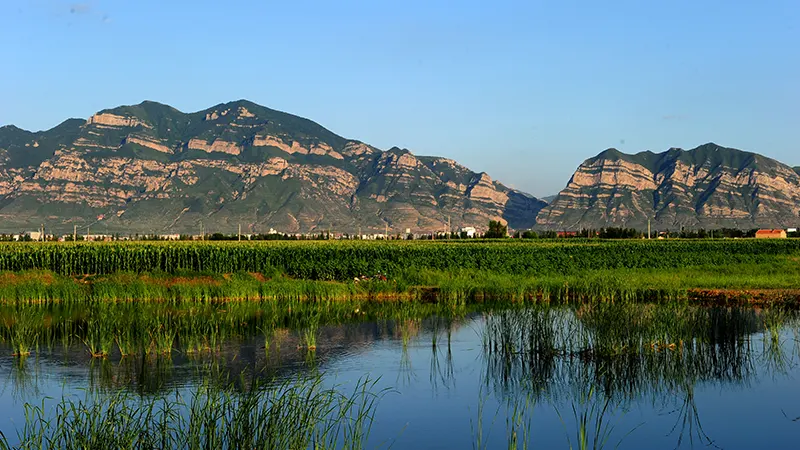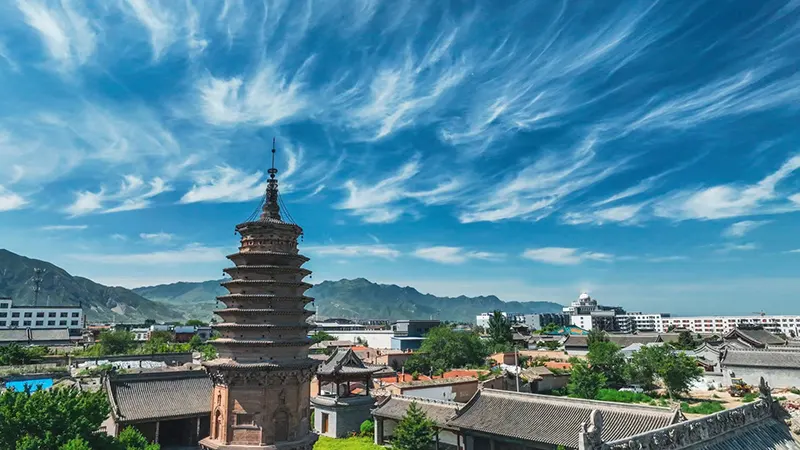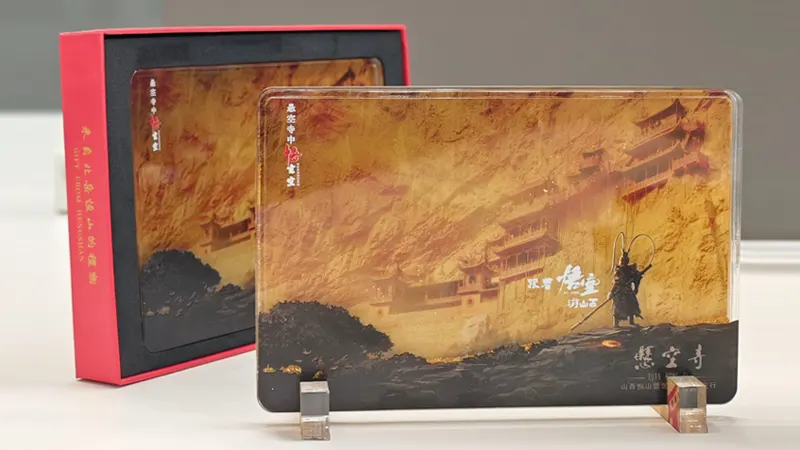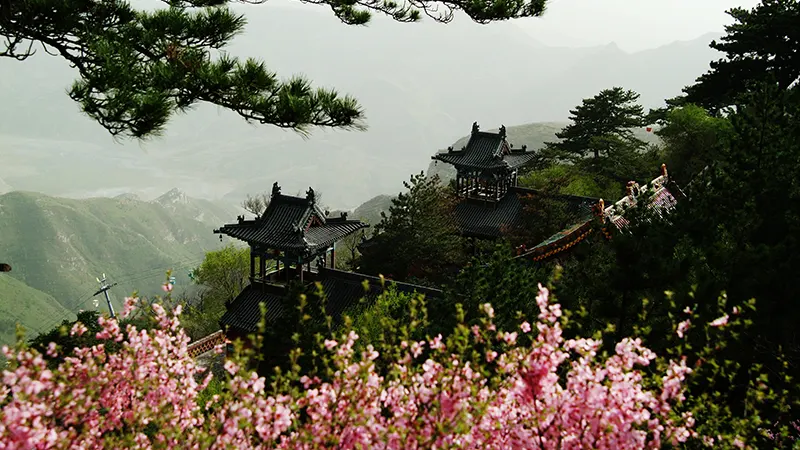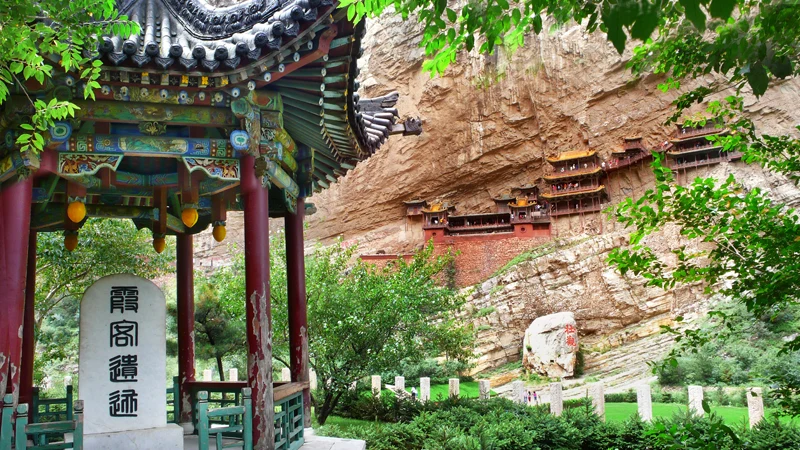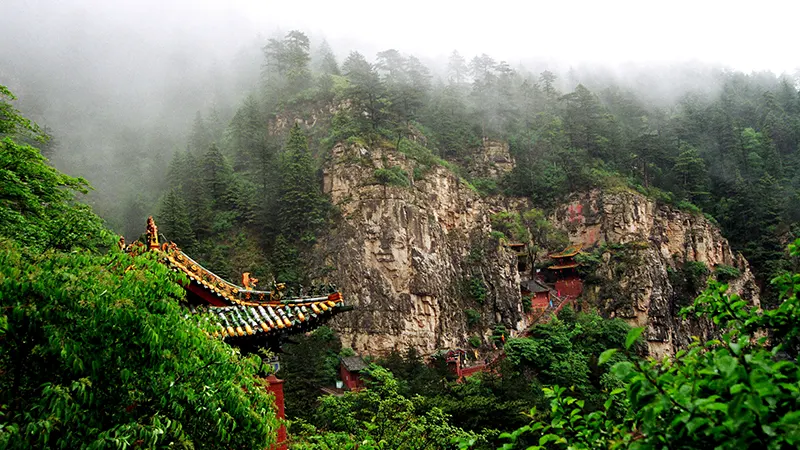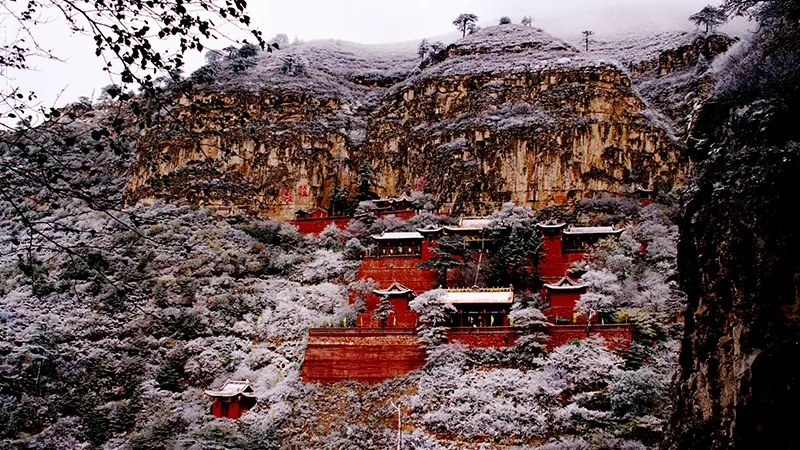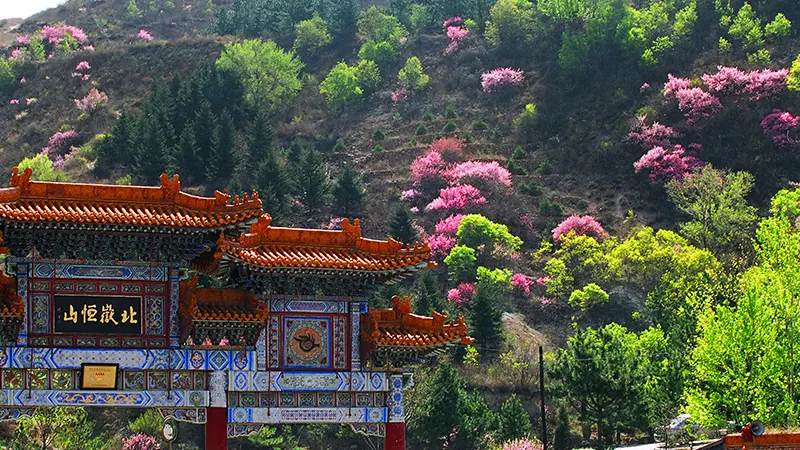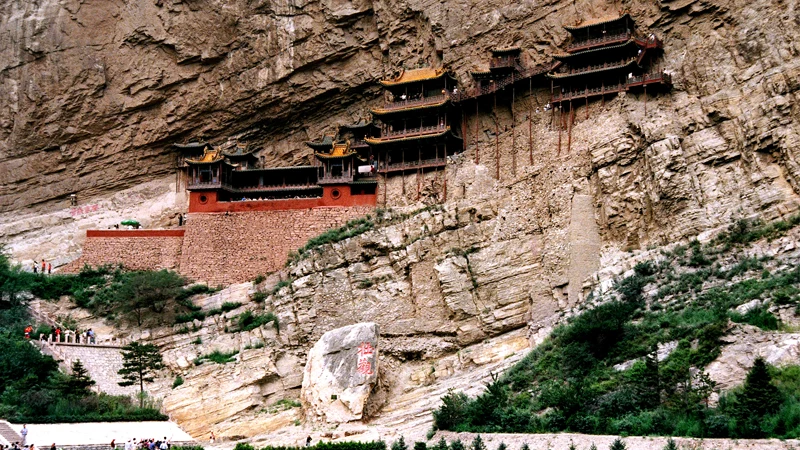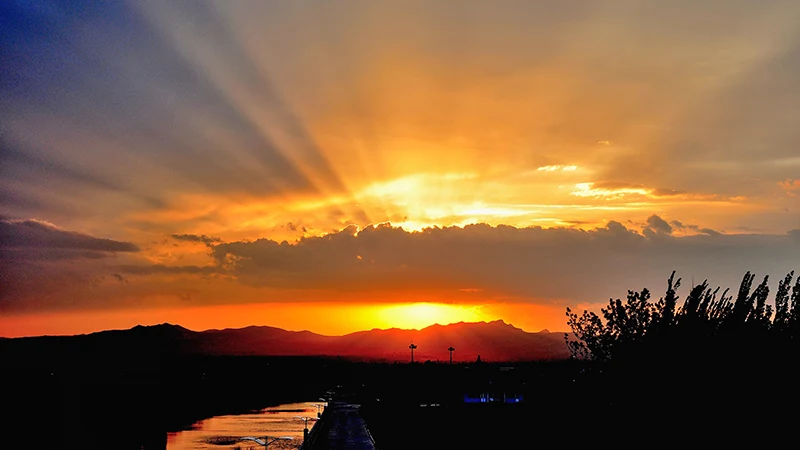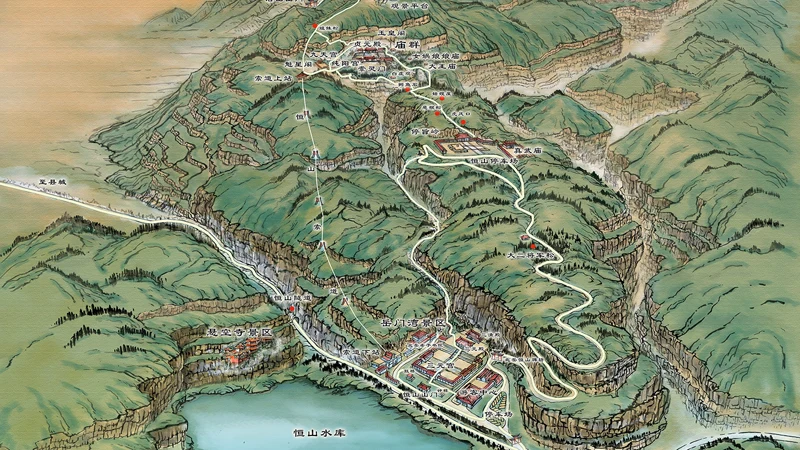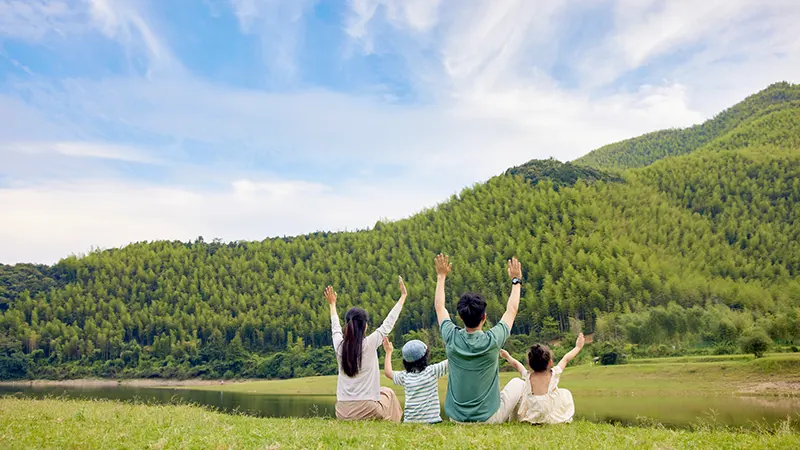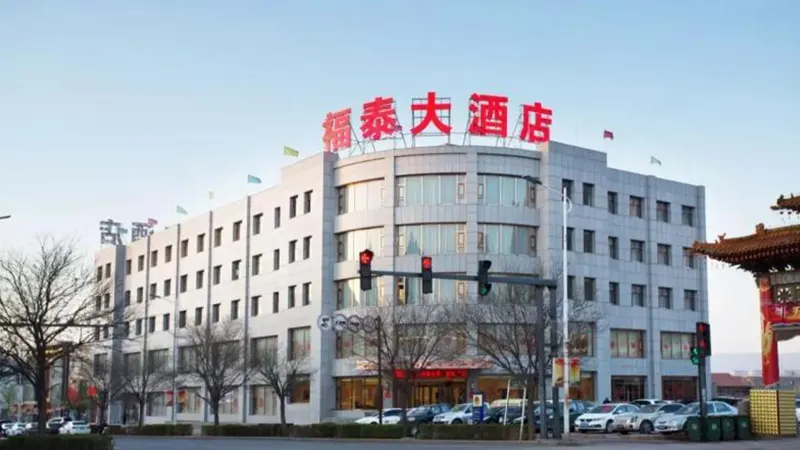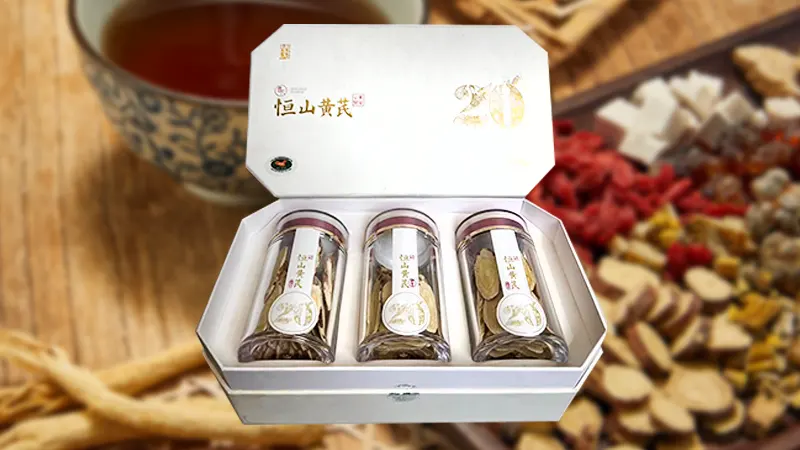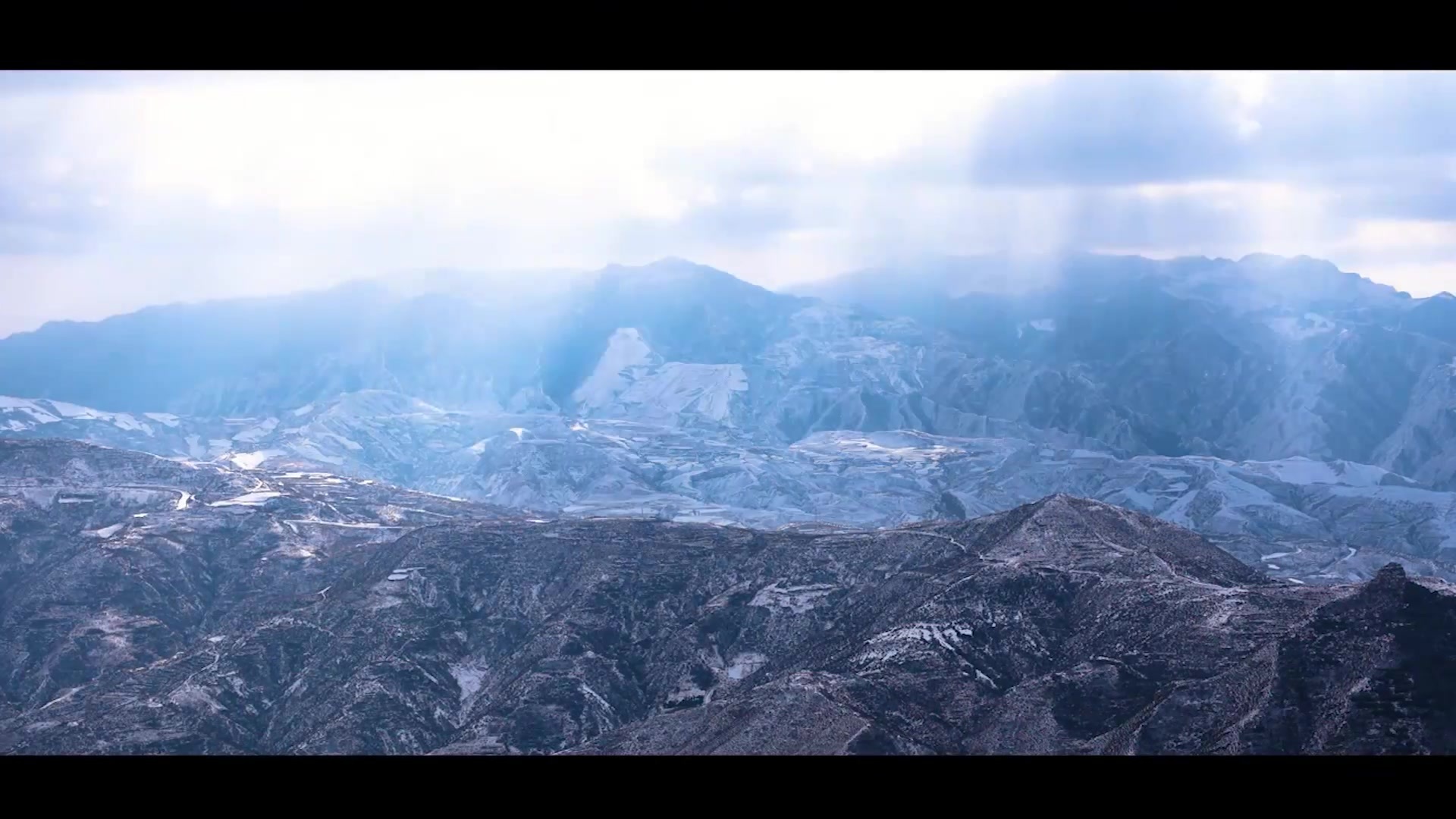Republic of China hemp mat treasure | Guiyou (1933) Deng Hengyue Ji (with poems and texts)
Publish Time:
2025-03-18 13:22
Source:
In today's ancient city of Hunyuan, when discussing well-preserved ancient residences, one must mention the "Ma Family Courtyard." The original owner, Ma Xi Zhen, has also gained attention, as if the person is known because of their residence.
Editor's Note
In today's ancient city of Hunyuan, when discussing well-preserved ancient residences, the "Ma Family Courtyard" is always mentioned, and the original owner, Ma Xizhen, has also gained attention, as if the person is known because of the residence. In fact, Ma Xizhen of the Republic of China period was a famous gentry in Hunyuan, a former Qing scholar, with a complex official career, having served as county magistrate in many places in Shanxi. After his retirement, he returned to his hometown, actively engaged in public welfare, wrote articles, and had considerable influence in his hometown.
In the autumn of 1933, Ma Xizhen, at the invitation of Fang Keyou, the commander stationed in Hunyuan, made a trip to Hengshan Mountain, leaving behind this "Record of Ascending Hengyue". For literati from other places visiting Hengshan Mountain, besides the profound historical and cultural significance of Hengshan Mountain, they will have a sense of novelty as newcomers to the sights, sounds, and daily life encountered along the way. As a senior literati of this place, Ma Xizhen is accustomed to the local customs and habits, and naturally disdains to write about them due to familiarity. He focuses on—the detailed mountain paths and the strange events and interesting people of the past and present, which is the biggest difference between this travelogue and those of literati from other places. During this mountain trip, Commander Fang Keyou brought a rather novel military telescope at the time, which Ma Xizhen and his fellow travelers passed around at the top of Hengshan, vying to describe the views and feelings observed through it, also a fun event.
Ma Xizhen's article and accompanying poem were originally from a Republic of China edition and had a certain number of circulating copies among the people of Hunyuan. Several years ago, the editor received a photocopy from Mr. Yang Zhiwen, which has been treasured ever since.
Travelogues of modern figures traveling in Hunyuan and Hengshan Mountain have always been a focus of this journal. This article is now published for readers to enjoy. Also included are Ma's "Supplementing the Strange Traces of Various Caves," "Hengyue's Manifestation of Spiritual Power," and "Visiting Ancient Sites of Hengyue" (1932, a seven-character ancient poem). Please take note.
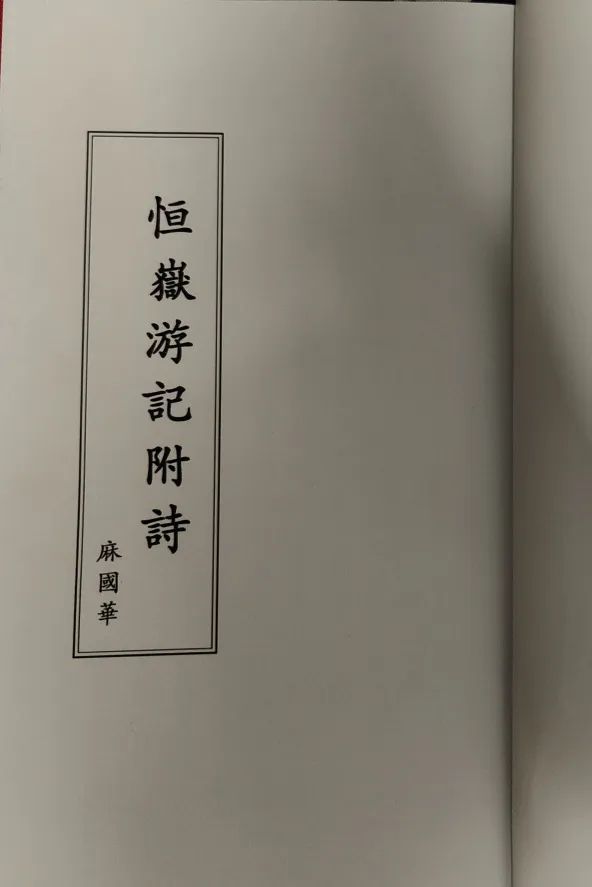
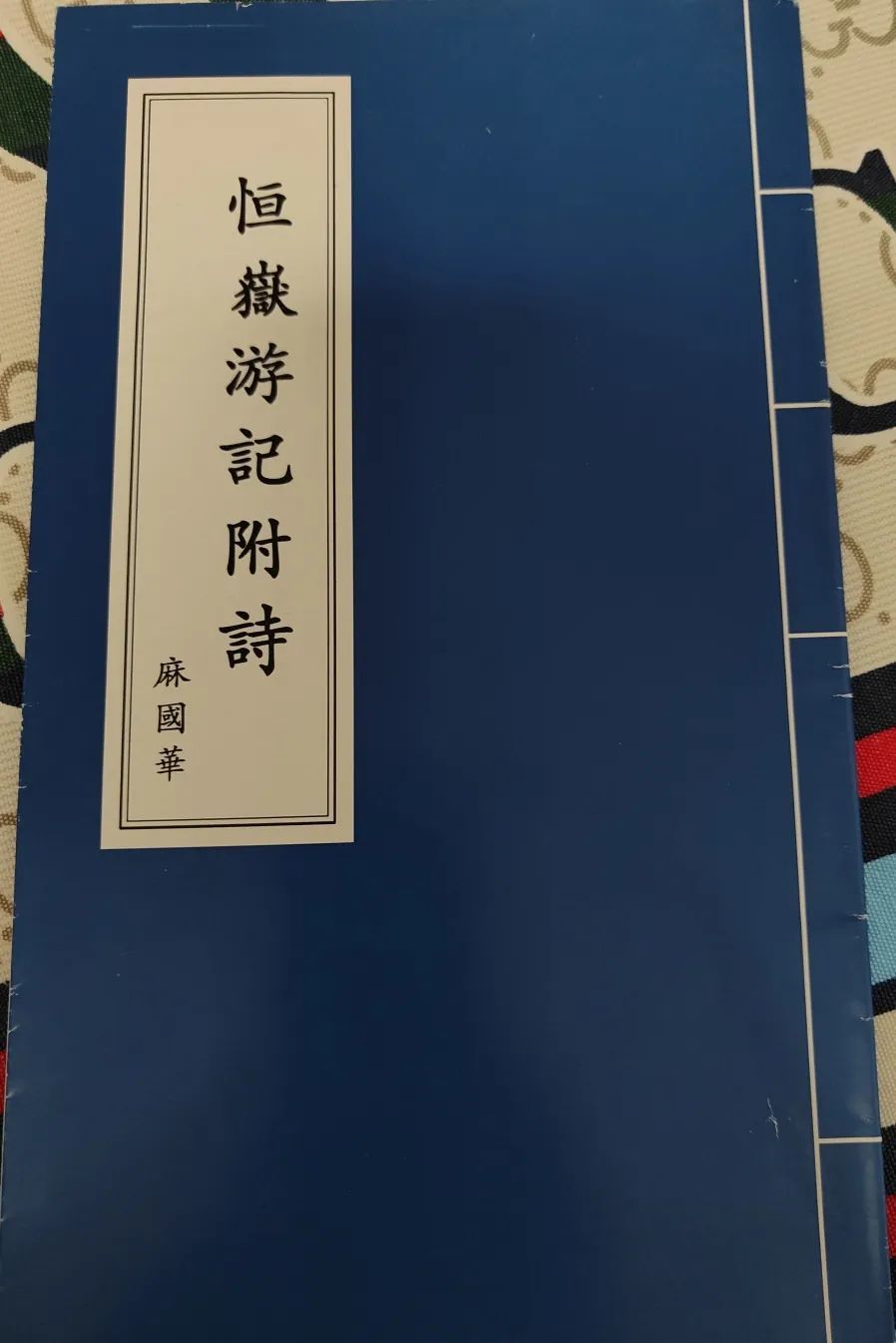
▲ "Travelogue of Hengyue Mountain with Attached Poem" by Ma Guohua
Record of Ascending Hengyue Mountain in the Guiyou Year
By Ma Xizhen
1933
Three days before the Double Ninth Festival in the Guiyou year, Commander Fang Zhanghou invited me to ascend Hengyue Mountain. Ten people went together, setting off from the southern suburbs.
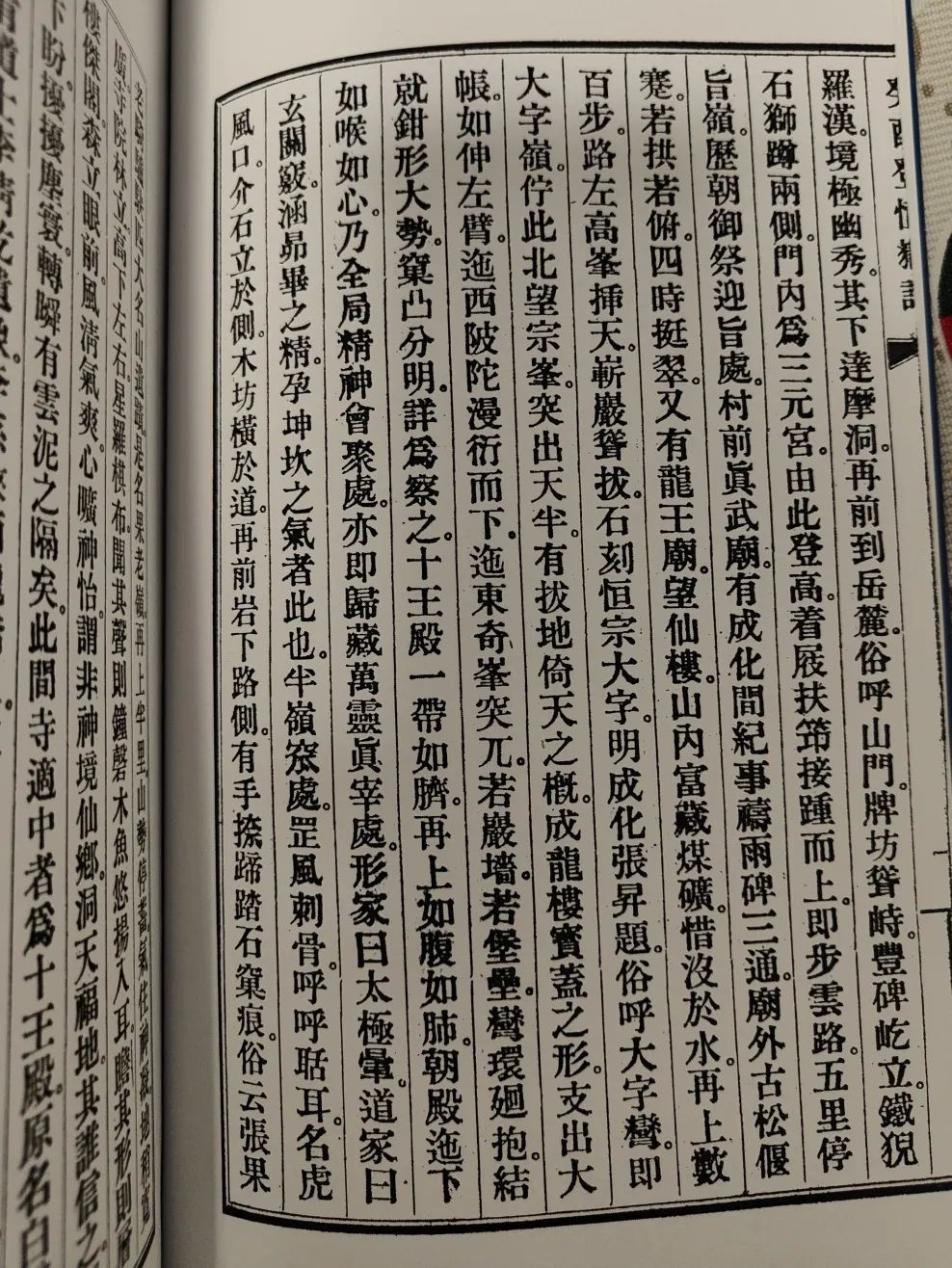

▲ "Record of Ascending Hengyue Mountain in the Guiyou Year" 01
Seven li to Jinlongkou, steep cliffs stand on both sides, the stream flows turbulently; a natural barrier, a stone tiger guards the gate, majestic pavilions stand side by side, truly magnificent. Passing Mulongwan, the water wheels rumble and turn, looking from afar like a waterfall gushing from the earth, a water curtain hanging down. Three more li, and there are sheer cliffs; looking west, you see dragon and phoenix palaces hanging from the mountainside, like a mirage at sea. Above, it reaches the limitless sky, below, it overlooks the unfathomable abyss; this is the Hanging Temple. Inside the temple are niches of the Buddha Ru Lai and Maitreya, a statue of an immortal riding an ox and carrying a sword, and to the north of the temple, the Taibai Shrine, with the large characters "magnificent" inscribed by Taibai on stone, are very strong. With cliffs on both sides, the clear air is misty, with smoke and fog flying around, which the annals describe as "the hazy rain of the Porcelain Gorge", indeed true.
Further ahead, there are many square caves carved on both banks. There used to be a stone bridge, which is now gone, the annals refer to this as the "Cloud Pavilion Rainbow Bridge," which was originally built in the first year of Tianxing in the reign of Emperor Daowu of Northern Wei when soldiers were mobilized to excavate Hengling for 500 li. During the Song Dynasty, Yang Ye’s military fort was here; the ruins remain, although now ruined; the strategic importance, however, remains as formidable as before.
Further on, to the east of the river is the Li Mu Shrine, and to the west of the river, on the cliff, the Guan Di Temple. On the top of the mountain bend and cliff is the Luohan Cave, several dozen zhang wide and unfathomably deep, with strange traces, which are now blocked. More details are provided later. Inside are eighteen Arhats of the South China Sea, with a very secluded and beautiful environment, beneath which is the Dama Cave.
Going further, we arrived at Yue Lu, commonly called "Mountain Gate," with towering archways and standing steles, iron animals and stone lions squatting on either side, and within the gate is the "San Yuan Palace." From here we ascended, wearing clogs and holding walking sticks, ascending one after another on the path to the clouds. After five li, we reached "Tingzhi Ridge," where emperors in previous dynasties received imperial decrees for sacrifices. In front of the village is the Zhenwu Temple, with three steles from the Chenghua period recording events of prayers for rain. Outside the temple are ancient pine trees, leaning and bending, always lush throughout the four seasons, and there are also a Dragon King Temple and a Wangxian Tower. The mountain is rich in coal mines, but they are unfortunately submerged in water.
After ascending several hundred steps, to the left of the road, a peak pierces the sky, with steep cliffs and the stone inscription of the large characters “Hengzong,” inscribed by Zhang Sheng in the Ming Chenghua era, commonly called "Dazibawan" or "Daziling." Standing here to look north at the Zong Peak, it protrudes from the sky, appearing to stand tall and majestic, with the shape of a dragon palace canopy. The peak extends out like a left arm, the west is gently sloping, while the east features abrupt peaks like cliff walls or forts, forming a pincer-like formation, with distinct hollows and protrusions that are easily visible upon close inspection.
The area around the Ten Kings Hall is like the navel; going further up, it is like the abdomen and lungs; below the hall is like the throat and heart; this is where the essence of the whole scene gathers, also where the true spirit of all living beings converges; in geomancy, it is called the "Taiji Halo," and in Taoism, it is called the "Mysterious Pass," containing the essence of the brilliant stars and embracing the energy of the Kun and Kan trigrams. Halfway up the mountain, in a hollow, the fierce wind bites to the bone and howls loudly in the ears, known as "Tiger Wind Mouth"; there is a rock on one side and a wooden archway across the path. Further ahead, on the side of the path below the cliff, are handprints and hoofprints on the rocky surface, and legend says that these are the traces left by Zhang Guolao riding a donkey carrying the Four Great Mountains, this is called "Guolaoling."
Further on, the mountain range levels off, the air is still and the spirit serene. The land becomes somewhat wider, with temples standing in rows, scattered high and low, left and right, like stars in the sky. The sounds of bells, chimes, and wooden fish are heard, melodious and soothing; the sight of tiered buildings and lofty pavilions fills the eyes. The air is fresh and invigorating, the mind tranquil and joyful. Who would believe that this is not a divine realm, a fairyland, a blessed place? Looking down, the bustling world seems instantly distant, separated by a vast gulf. Among the temples here, there is the Ten Kings Temple, originally named "Bai Ling Guan" (White Spirit Temple). Inside the temple is a portrait of the Taoist priest Li Qingqian. Li was from Longqiao, Shaanxi Province, and came to the mountain to practice in the twelfth year of the Yongzheng reign. He wished to build the Ziwei Pavilion. After the foundation was laid and timber was felled for use, he was falsely accused and disgraced, and left. However, local people such as Chen Dian persuaded him to stay, and he vowed to kneel and recite imperial scriptures for three years. After completing his vow, he passed away peacefully, and his portrait was made and enshrined. His face remains fresh and free from dust, which people find extraordinary and respectful, calling him "Dun (a character combining wood and speech) Dao." Behind the temple, on a high hill, is the "Three Mao Caves," where Mao Ying, Mao Gu, and Mao Zhong attained enlightenment. In the courtyard is the Ziwei Pavilion; east of the courtyard is the "Jie Guan Ting" (Reception Hall), originally named "Bai Yun Tang" (White Cloud Hall); east of the hall is the "Xuan Wu Jing" (Black Tortoise Well), also known as "Lü Yi Quan" (Stepping One Spring), a place where prayers for rain are extremely effective. Often, when the sun is scorching, sincere prayers will bring forth timely rain. What is particularly remarkable is that during temple fairs, tens of thousands of people can draw water without the well ever running dry. However, if anyone shows disrespect, the well will immediately dry up, and only after repentance and prayer will it flow again. The well itself is only a three-foot cubic stone cave. To the left of the well is a stele commemorating the temple's repair in the thirteenth year of the Hongwu reign. It was erected by Wang Yue, the Yunzhong Dragon Tiger General and Commander-in-Chief, after his prayers for rain during a severe drought in Yunzhong were answered. The inscription reads: "Since Emperor Shun's reign, the stone flew east, and a temple was built in Quyang. When the Northern Wei Dynasty established its capital in Yunzhong, the Yuan Yue Palace was founded. In the Kaiyuan era of the Tang Dynasty, it was granted a royal title, and Emperor Xuanzong visited and bestowed the temple name Longquan Guan. In the Xiangfu era of the Song Dynasty, it was further honored as An Tian Yuan Sheng Di. During the Liao and Jin dynasties, it was constantly rebuilt. Later, due to disrepair, the palace fell into ruin, so it was repaired, in gratitude for divine grace." This was written by Zheng Yunxian, the magistrate of Hunyuan Prefecture.
From here, we will visit the various temples, divided into three routes: A, B, and C, which will be described in detail below.
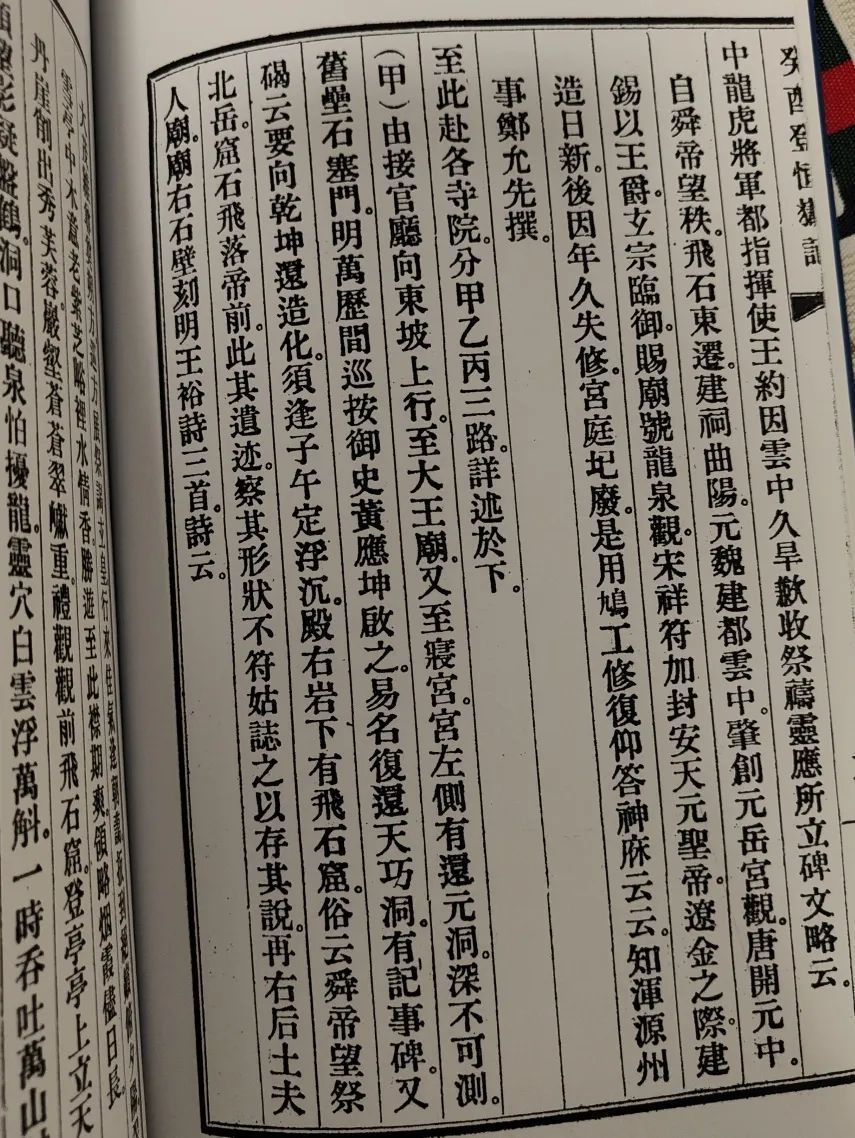

▲ "Record of Ascending Mount Heng in the Year Guiyou" 02
A. From the Reception Hall, proceed east up the slope to the Great King Temple, and then to the Palace.
To the left of the palace is the "Return to the Origin Cave," whose depth is unfathomable. It was formerly blocked by stones, but in the Wanli era of the Ming Dynasty, Huang Yingkun, a touring censor, opened it and renamed it "The Cave of Restored Heavenly Ingenuity." There is a commemorative stele, and an inscription that reads: "To return to the transformation of the universe, one must encounter the Zi and Wu (sub-branches of the Chinese zodiac) to determine the rise and fall." To the right of the hall, below the cliff, is the "Flying Stone Cave." Local legend says that when Emperor Shun offered sacrifices to Mount Heng, a stone flew down in front of him, and this is its remnant. However, upon examination, its shape does not match the legend, so it is recorded here to preserve the story. Further to the right is the Temple of the Earth Mother. On the right stone wall of the temple are three poems by Wang Yu of the Ming Dynasty, which read:
Grand and majestic, you establish the north, Inspecting the region, I visit the Xuanhuang Emperor.
Coming here, I encounter the auspicious air of the morning, Reaching the peak, I overlook the setting sun.
The wood in the Cui Xue Pavilion is old and weathered, The water in the Zi Zhi Valley is fragrant and sweet.
My mood is refreshed by this wonderful journey, Enjoying the clouds and mist all day long.
Crimson cliffs carve out beautiful lotuses, The ravines are deep and verdant.
I pay respects at the Flying Stone Cave, And ascend the pavilion on the Heavenly Peak.
Looking at the pine trees, I think I see a coiled crane, Listening to the spring in the cave, I fear disturbing the dragon.
White clouds float in the spiritual cave in vast quantities, At once swallowing and exhaling, sealing off the myriad mountains.
The Heng Peak, towering and reaching the sky, The North Pole's celestial pivot, the South Pole low.
Washing in the Milky Way, it seems within reach, Touching the stars and constellations, a thin cloud ladder.
The crimson cliffs reflect the red glow of the sun, The green pines connect with the azure sky, a mesmerizing sight.
Mount Heng in Yunzhong, the ridge of the world, Vaguely visible across the clouds and mud.
To the left of the palace is the "Dressing Tower," with its magnificent architecture, eaves like fighting dragons, and its towering peaks turning from east to south, like a curved screen. The rocks are jagged, the ravines deep and secluded. The White Cloud Spiritual Cave hangs on the right cliff, with the large characters "White Cloud Spiritual Cave" carved on the rock beside it. When it is about to rain, mist and fog fill the valley. Many large characters are carved on the cliff beside the palace, which are roughly recorded as follows:
Yunzhong's scenic wonders Spiritual Palace's manifestation Cave Gate's spring dawn
Scenic wonders of ancient and modern times Not of this world Towering to the heavens
White Cloud Spiritual Cave Road connecting to the celestial avenue Yi De Peak
Restored Heavenly Ingenuity Return to the Origin Cave Arch-supporting celestial bridge
Thousands of cliffs vying for beauty Myriad ravines competing in flow Flying stone remains
Another untitled poem written when ascending the mountain is recorded below:
Having built the Great Wall, I feel ashamed, The unification of China and the barbarians remains empty talk.
Looking at the course of history, there is no second heaven, Asking about wise strategies, there are only three.
The mountain serves as a constant defense for the north, Birds still yearn for the south, like the wild geese of the Han Dynasty.
The magnificent buildings of the dragon wasteland are all remnants, A lone horse in the autumn wind, tears unbearable.
Spring at the foot of the mountain
From the Great King Temple, proceed south past the Yan Dao Shrine, then south to Xiyang Ridge and De Yi An (The One Obtained Hermitage), where a Wei Dynasty Taoist priest attained enlightenment. The Taoist's name was Qingquan, and his sobriquet was De Yi, hence the name. During the reign of Emperor Shenzong of the Ming Dynasty, he built a hermitage here, understanding the immortal scriptures, and painting and reciting taboo names. His patched robes and trousers were worn thin at the knees, and he ate coarse grains and vegetables, sharing his meager meals. He lived in the hermitage for several decades, never straying more than 300 steps. He was still alive during the Kangxi era, and later passed away peacefully. The path is dangerous and difficult to traverse, requiring one to crawl forward. Further south is the "Self-Sacrifice Cliff." Xiyang Ridge faces west, with a solitary cliff standing like a sharp screen. At sunset, even though the sun has set, there are still clouds and mist, like water gauze illuminating the moss and stone patterns on the cliff, a work of art surpassing embroidery. It is mistakenly said to be in the Immortal's Mansion. The Zi Xia Cave is to the left of the palace, adjacent to Xiyang Ridge. The cave is named after the Zi Xia Yuan Jun Shrine, which is now in ruins. Outside the cave, a waterfall hangs down like a piece of white silk.
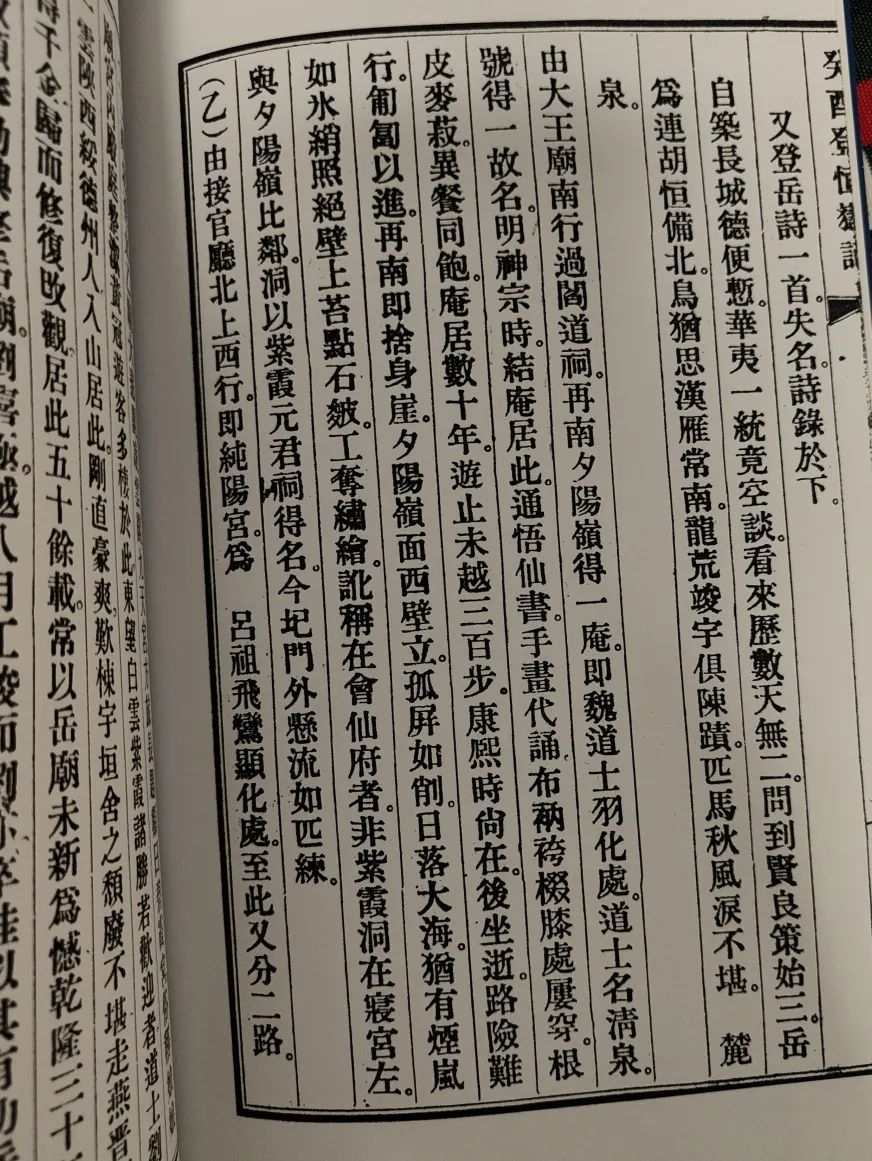
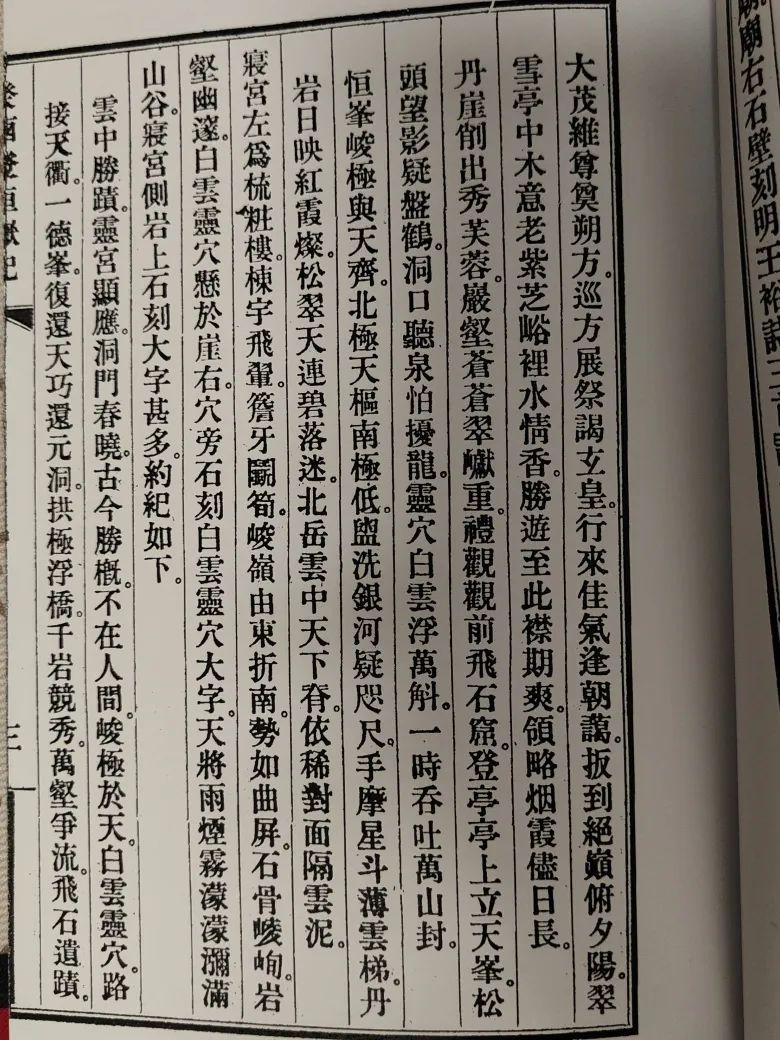
▲ "Record of Ascending Mount Heng in the Year Guiyou" 03
From the reception hall, going north and then west, one reaches "Pure Yang Palace," where Lü Dongbin is said to have manifested himself. From here, the path splits into two.
(1) Northwest to Taiyi Temple, Great Compassion Pavilion, Lingyun Pavilion, and Nine Heavens Palace.
Brigadier General Fang inscribed the words “Bixia Palace,” commonly known as the Niangniang Temple. The palace halls are clean and tidy, attracting many Taoist priests and tourists. Looking east, the scenic views of Baiyun and Zixia seem to welcome visitors. Taoist priest Liu Yiyun, from Suide Prefecture, Shaanxi Province, settled here. Known for his honesty and forthrightness, he lamented the dilapidated state of the buildings and traveled to the Yan and Jin regions to raise funds, eventually collecting thousands of taels of silver to repair and renovate them. He lived here for more than fifty years, always regretting the unfinished state of the Yue Temple. In the 30th year of the Qianlong Emperor's reign, Magistrate Gui Jingshun was ordered to repair the Yue Temple. Liu was overjoyed and the work was completed in August, but Liu also passed away. Gui wrote an account commemorating Liu's contributions to the Yue Temple. To the west lie the ruins of Cui Xue Pavilion, and below it is Wangxian Pavilion. To the right of the pavilion flows the Heng River; in early summer, the view south is exceptionally beautiful.
Behind Nine Heavens Palace are the "Four Great Physician Pines," where cranes and phoenixes often gather. Southward lie the Sore God Temple and Mountain God Temple, and further down, the Immortal's Tomb. On July 3rd, 1914, during the repair of the Yue Temple and the raising of the main beam of the Xianfu building, night-time supervisors, including An Baoyuan, witnessed three lights appearing above the Immortal’s Tomb, rotating and shining brightly. These then transformed into countless lights, illuminating the entire mountain valley like a painting. Similar lights are frequently seen here, called "divine lights," and are certainly unlike fireflies or phosphorescence; their wonder is indescribable. Such lights are also often seen in Qingcheng Mountain and Emei Mountain in Sichuan Province, frequently recorded, suggesting supernatural phenomena. Are these not the manifestations of mountain spirits?
(2) From Nine Heavens Palace, going northwest to a depression on the mountain ridge, is "Kui Xing Pavilion".
Overlooking the city, the scene unfolds like a painting. Northward lies Hengbei, a shortcut to the city, saving ten li of travel, although steep and narrow, making it difficult to traverse.

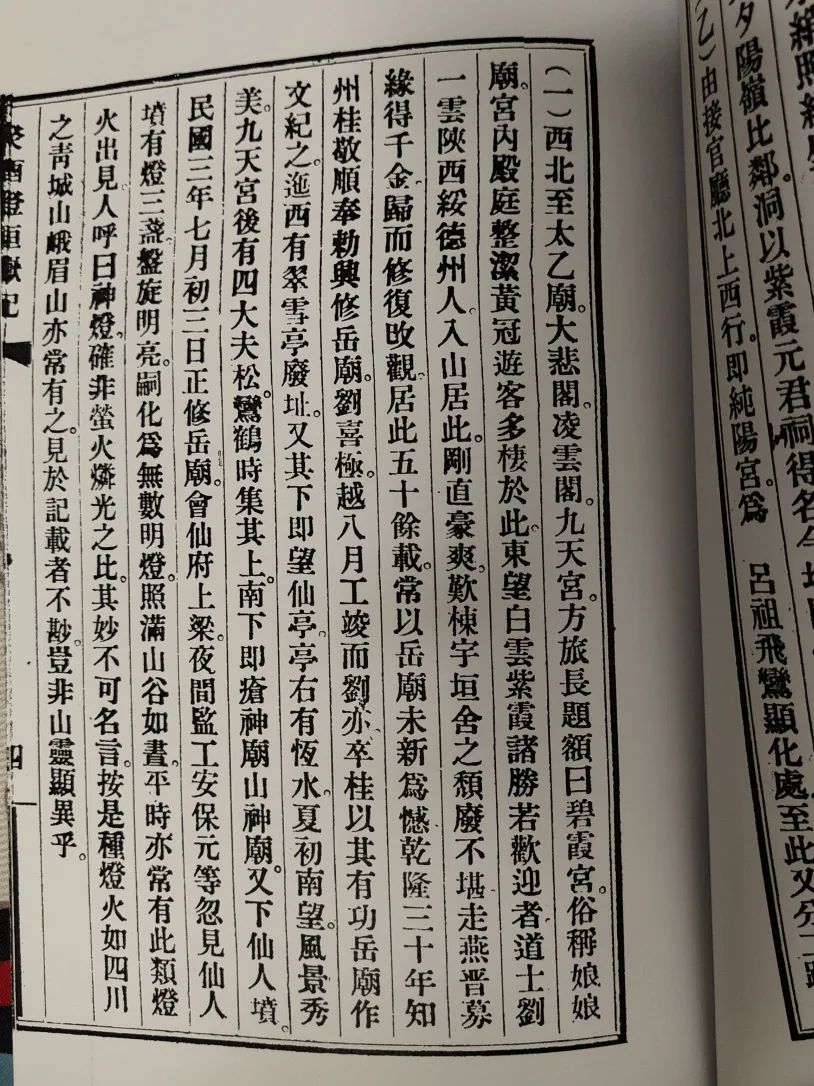
▲Record of Ascending Hengshan Mountain in the Year of Guiyou 04
C From Pure Yang Palace, heading slightly northeast, one reaches Wenchang Temple, Guan Di Temple, and Tian Guan Temple. Further up are Lao Long Wang Temple and Erlang Temple. To the northeast, one can see the peaks of Zizhiyu, Shizhi Tupo, and Zhan Yun Gang, with their scenic spots.
Turning west and then heading north, one arrives at Chongling Gate. Inside the gate, to the left is Qinglong Hall and to the right is Baihu Hall. In the middle, a staircase leads north for ninety-eight steps, flanked by towering cypresses and junipers, centuries old, their greenery unyielding throughout the seasons. Atop the steps is the South Heavenly Gate, within which is the main hall, facing south. The hall is titled “Zhenyuan Hall,” formerly known as “Xuanling Palace.” To the left is a changing room, and to the right is a sutra library. In the 24th year of the Wanli reign of the Ming Shenzong Emperor, an imperial edict ordered the delivery of Taoist scriptures to famous mountain temples. Bai Zhong, a eunuch of the Imperial Horse Supervisory Office, was dispatched to deliver 1,479 works in 512 volumes, categorized into sixteen sections, as follows:
Sections Divine Talismans Jade Charms Spirit Charts
Catalogs Precepts Etiquette Methods
Various Arts Records and Transmissions Praises and Hymns Reports
Main Texts Tai Xuan Tai Ping Tai Qing
Imperial Edict:
To the Abbot of the Northern Yue Temple on Hengshan Mountain: I, the Emperor, with sincere heart, have had the Tripitaka printed and distributed to temples in the capital and throughout the land. The imperial edict regarding its protection has already been issued. You, the abbot and the monastic community, must ensure its respectful placement and maintenance, offering daily worship, ensuring personal health and well-being, and maintaining the purity of the temple. Repent for past transgressions, and pray for longevity and blessings, peace for the people, and stability for the nation, so that the four corners of the world may achieve tranquility, and assist me in establishing a benevolent rule. Therefore, I hereby dispatch Bai Zhong, Deputy Superintendent of the Imperial Horse Supervisory Office, to deliver this collection for proper enshrinement. All should diligently acknowledge and follow this order. So it is decreed.
The original imperial edict still exists in the main hall. At the end of the Ming Dynasty, forty-eight volumes were lost. In the eleventh year of the Qianlong Emperor’s reign, Liu Yiyun, a Taoist priest from Jiutian Palace, raised funds in Baiyun Temple in Beijing to have the missing texts copied. Since the Republic of China, many more volumes have been lost and have been respectfully requested from Baiyun Temple again.
The treasures of the Northern Yue Antian Yuansheng Emperor and other temples are now also reprinted. There are also four ancient paintings, each several feet long, depicting the images of the Azure Dragon, White Tiger, Vermilion Bird, and Black Tortoise, with bold brushstrokes and vibrant energy – truly the work of immortals.
This location is situated with towering cliffs behind, supporting clouds and sun, facing cascading peaks, embracing a dragon ridge that brings clouds and rain on the left, and a stone tiger that lets out a long howl on the right. Sometimes, the sound of the pines resembles the ocean waves of Putuo; sometimes, cranes and phoenixes appear, like the Queen Mother's escort. Thousands of peaks and rocks bow their heads; three sides and nine barriers are imbued with spiritual energy. Ancient pines and cypresses transform into dragons and snakes; precious grasses and flowers vie for the offering of auspicious signs. Is this not the moment when the heavens align, and all creatures offer their loyal service? The hall is tall and imposing, magnificent and resplendent, with golden brilliance, exquisitely carved pillars, and intricate designs. The couplets evoke the styles of famous calligraphers, a feast for the eyes; the inscriptions are a blend of styles, a visual delight. Buddhist chants echo, scriptures are recited; ethereal music wafts, from flutes and shawms; one contemplates and examines, the heart feels reverence; respectful and devout, one witnesses majesty. Is it real or illusion? Truly, it is inexplicable.
According to the map of the five sacred mountains, the deity of Mount Hengshan is the third son of Jin Chan, named Chen E, the True Lord of Mysterious Abyss and Limitless Void. He was granted the title An Tian Yuan Sheng Di by the Song dynasty, and then changed to the god of Mount Hengshan by the Ming dynasty. He oversees the land, mountains, rivers, and livestock of the world. Changrong, Zhang Guo, Mao Ying, Li Jiao (Jiao with a cow radical), and Guan Ge, and other immortal deities frequently gather here. Thus, through the ages, they have helped emperors to defeat rebels, their deeds continuously recorded. Prayers and supplications are always answered. The place is free from disasters; the harvest is abundant. The divine responsiveness is evident. Therefore, countless people from far and near come to pay homage, the roads often packed with pilgrims.
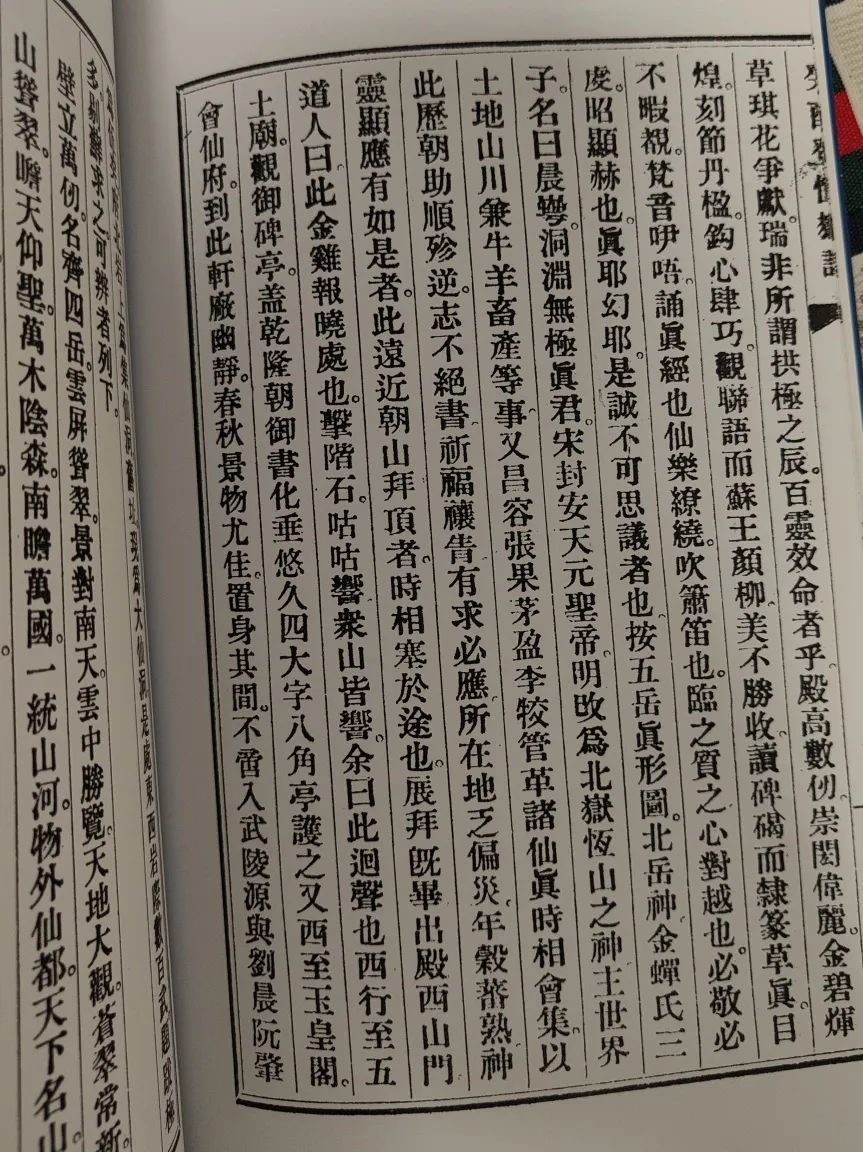
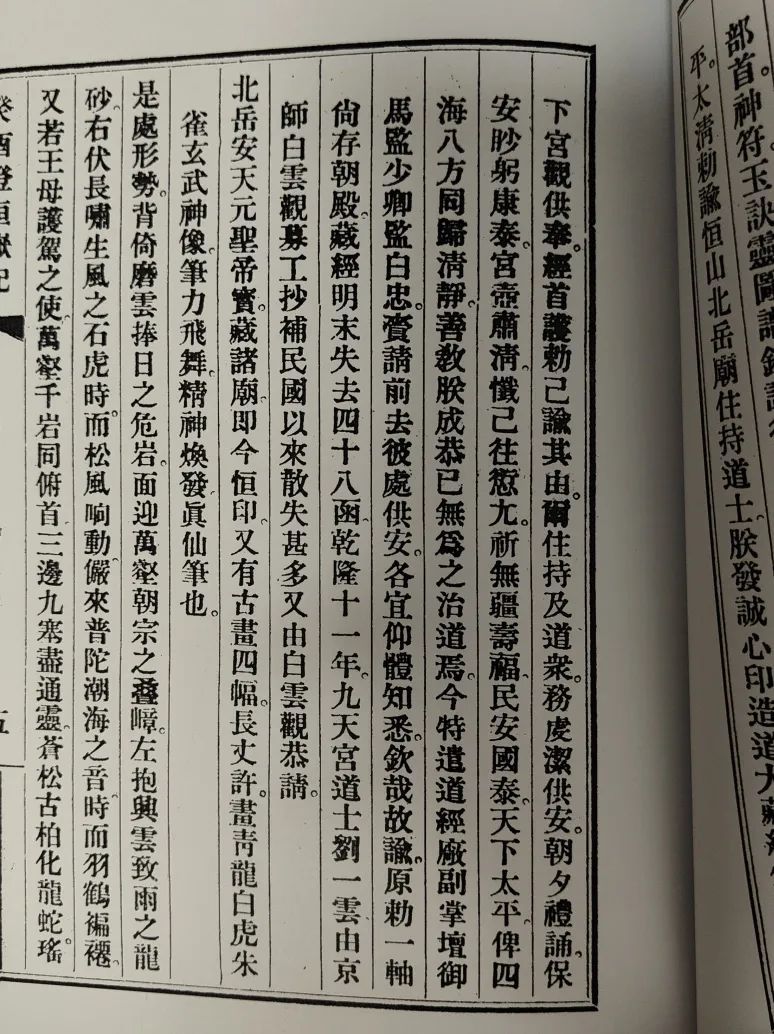
▲Record of Ascending Hengshan Mountain in the Year of Guiyou 05
After the ceremony, exiting the palace's west gate, a Taoist said, “This is where the Golden Rooster crows at dawn.” Striking a stone step, a “goo-goo” sound echoed throughout the mountains. I said, “That's an echo.” Proceeding west to the Wutu Temple, we viewed the imperial stele pavilion, which houses a large character inscription from the Qianlong era, "化垂悠久" (roughly, "lasting transformation"), protected by an octagonal pavilion. Further west, we reached the Jade Emperor Pavilion and the Meeting Immortals Mansion. Here, the atmosphere was open, tranquil and serene, the scenery particularly beautiful in spring and autumn. Being there was like entering the Wulingyuan and joining Liu Chen and Ruan Zhao (legendary figures). Above the northern cliff of the mansion was the old site of the Ji Xian Dong (Gathering Immortals Cave), now known as the "Da Xian Dong" (Great Immortal Cave). This area spans several hundred meters between the east and west cliffs, with countless inscriptions. After clearing away moss, we were able to discern the following legible ones:
Ten thousand zhang cliffs stand tall, names match four sacred mountains; Clouds screen verdant peaks
Scenic views facing the southern sky, magnificent views among the clouds, grand vista of heaven and earth
Evergreen and vibrant, verdant mountains rise; looking up to Heaven, admiring saints
Ten thousand trees cast shade, looking south to myriad nations; unified mountains and rivers
Immortal realm beyond the world, famous mountains under Heaven, connecting earth and Heaven
The foremost school of Kunlun, blessed land and cave-Heaven
and many more, too numerous to recount. Further west and then north is the Qinqi Terrace. The ground is not even enough for a bow, but the stone is smooth as a whetstone, able to accommodate two players and an observer. Square lines are carved onto it for the game. On a moonlit and breezy night, woodcutters and shepherds still hear a "ding-ding" sound, conjuring the images of Wang Zi Lan Ke and Zhong Zi, and their feelings; the scene is beyond compare. Inscriptions on the top of this rock include:
A pillar in the north of the Big Dipper, traces of enlightenment, immortal mountains manifest strangeness
Stone walls pierce clouds, a game of Go, the Qinqi Terrace
etc. Further west lies the Tongxuan Valley, where Zhang Guolao attained immortality by alchemy. Zhang Guolao, during the Tang Kaiyuan era, was granted the title of "Tongxuan Xian Sheng" (Master of Penetrating Mystery), hence the name of the valley. There was an old stone gate, weathered by smoke and clouds, secluded and eerie, with remaining traces of alchemy furnaces and hearths. Inscriptions on the entrance of the valley include "Fruit Old Immortal Traces" etc.
Five hundred steps south directly reaches Jiutian Palace. Turning from the valley towards the north of the Meeting Immortals Mansion, climbing vines and creepers, using both hands and feet, we made our winding way up to the summit. The summit is over three thousand meters above the ground, reaching into the clouds, truly allowing one to touch the stars, turn the Big Dipper, and seize the power of creation. The stones are of strange shapes, uniquely yellow in color. Short pines are scattered, surrounding the bald summit like an umbrella or a centipede. Old roots entwined with rocks, knotted and unbreakable, unbent and uncrumbled, unhindered and unobstructed, roar in the wind, their sound echoing loudly. This is called "Summit Pine Wind." It washes the clear sky and stirs up the vital energy, when the sky was clear and bright, a boundless expanse of blue, viewing the Five Platforms, Three Passes, and Nine Villages (scenic sites). The golden city tower, the Sanggan river, looked like needles and threads, and the Great Wall, purple fortress, looked dim and desolate, as if with lingering sorrow. The mountains and seas, Yu Guan, solemn and dignified, as if with mournful grandeur. Zijin, Feihux, Daomas, and Juyong; like fortifications, like guards, while rushing down, feelings are entangled. At this point, I began to feel that looking down, all the mountains looked small, the world like a floating bubble; vast energy filled the air, and the primordial spirit eternally immortal. Everyone cheered and laughed.

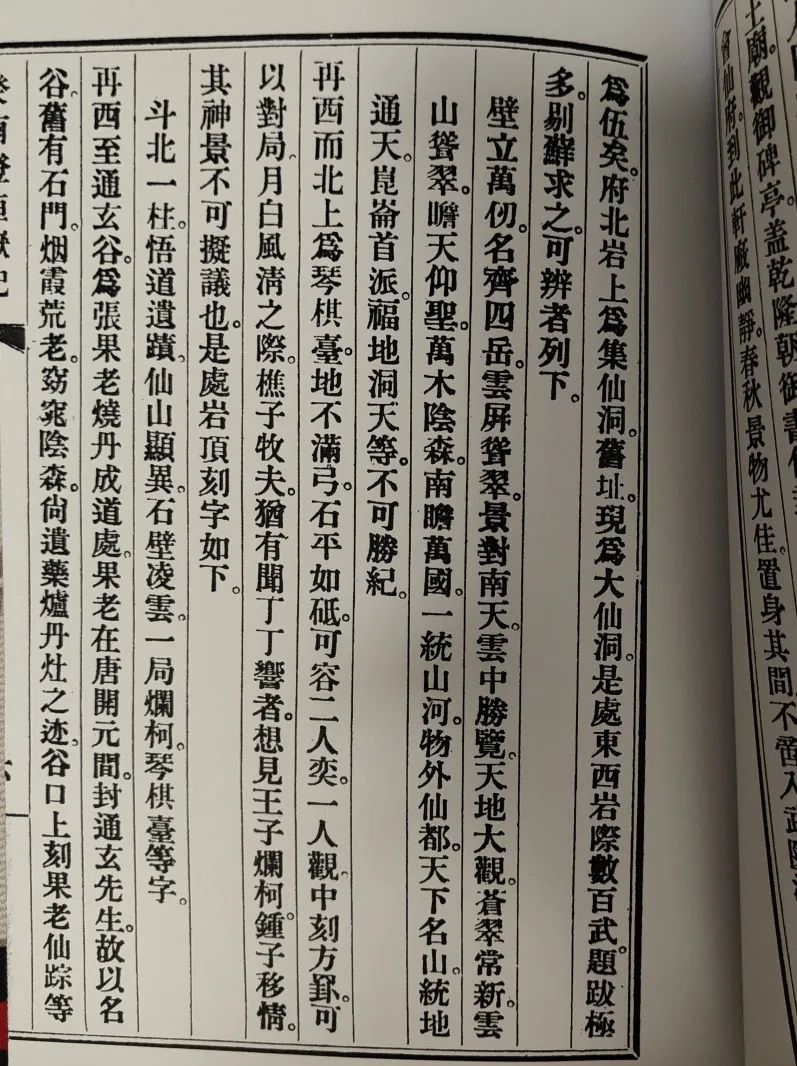
▲ Record of Ascending Mount Heng in the year Guiyou (癸酉) 06
Looking around with a telescope, some said, "The tortoise of the Zhi City, emerging from its shell and moving", others said, "The shadow of Feng Mountain, spreading its wings to fly", or sang the line, "On the peak of North Mountain, celebrating the Double Ninth Festival, the heavenly wind blows over the yellow flower wine". I also said, "Without climbing high mountains, one cannot see the flatlands. From now on, I feel even more that in life, one should strive to reach higher, see broader, have a farther vision, and set their sights beyond, I have realized it during this visit." Everyone agreed.
Again we went around to the East Cliff's hollow, then saw flocks of jade sheep, some sleeping, some standing, like those recently ordered to halt. The slope of stone fat, dotted with stars, like ancient tadpoles. The clouds piled up on the ridge, bone-like rocks, like spring bamboo shoots coming out of the ground, or like a mountain of swords and knives, shocking and frightening, making it hard to approach. Beside it, steam billowed, like steaming millet and sorghum, coming out from the rock crevices, touching the stone inch by inch, like impending rain.
Some said: This is the "Purple Chicory Valley", this is the "White Cloud Cave". The cliffs are steep and the paths dangerous, not easy to climb. We agreed, "Not to reach with our bodies, but with our spirits; not to seek with our forms, but with our hearts; to use our eyes to take the place of our feet, and our fingers to answer one another." Some said: "Once the Yan lord obtained jade pendants and jade bi disks, more than seventy of each, under a large tree root; where is that tree now?" Or again: "In the Ming Jiajing 35th year, twelve stalks of black chi were presented to the emperor, are they still there today?" Or again: "The swift snake, head and tail connected; the protective grass, superior to flattery. They are special products of this mountain, why don't we bravely explore them one by one?"
I said: "Alas, the sun has already set, my legs are tired, the meal is ready, exploring scenic spots, why not leave it for another day? Moreover, in the world, happiness cannot be excessive, good fortune always leaves something in reserve, how can one exhaust it all?" Everyone agreed, and we left together by a winding path.
Reaching the changing room, the lights were already on.
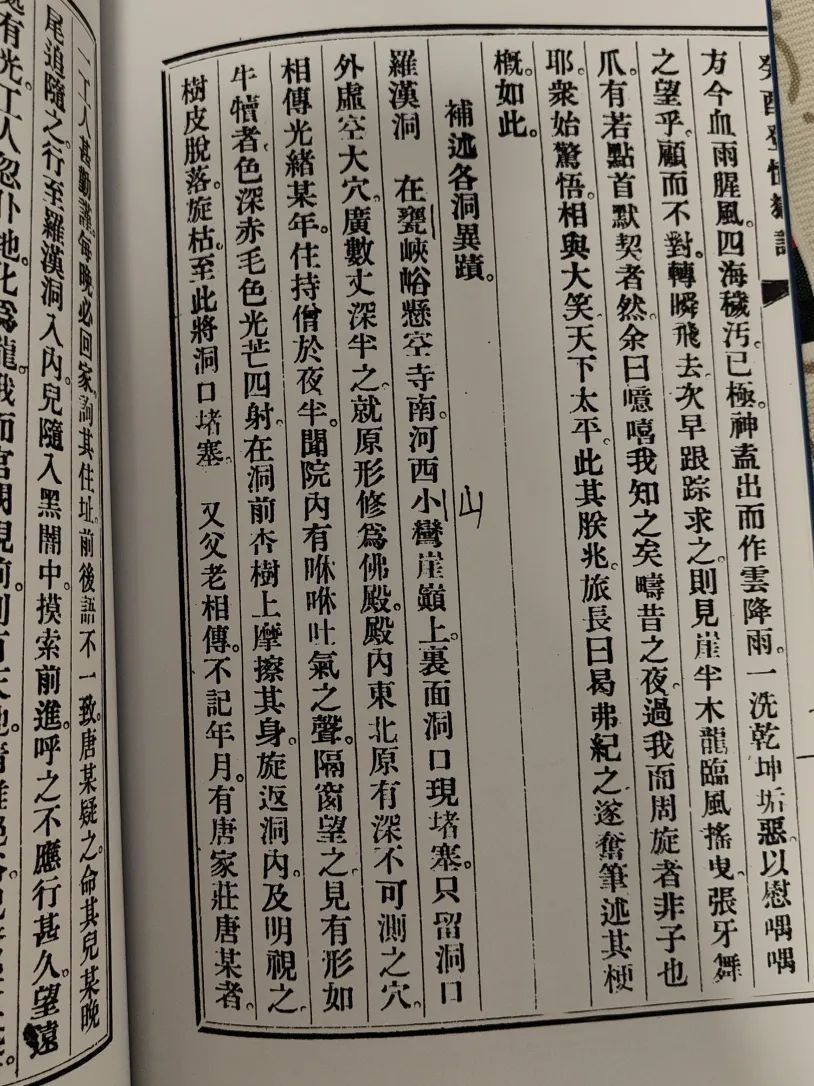
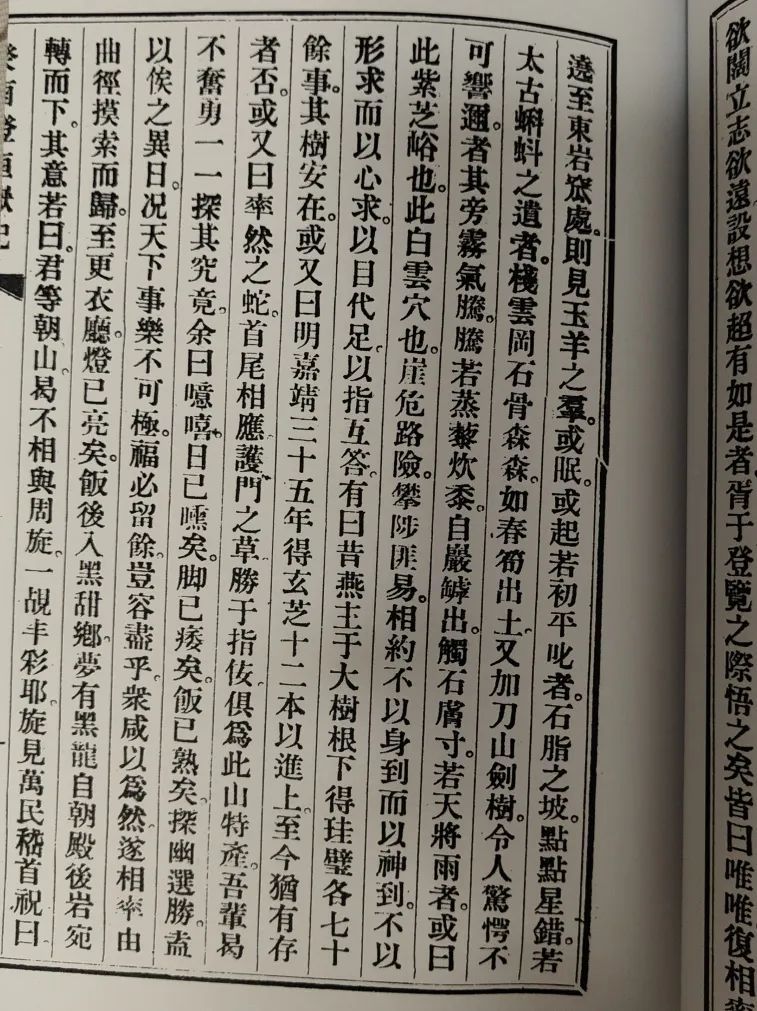
▲ Record of Ascending Mount Heng in the year Guiyou (癸酉) 07
After dinner, I fell into a deep sleep, dreaming of a black dragon twisting down from the cliff behind the main hall. It seemed to mean, "You all came to worship the mountain, why don't you come with me, and have a look at my splendor?" Then I saw countless people kowtowing and praying, "Now the world is in turmoil, the world is extremely filthy, may the gods come down from the clouds, wash away the filth of the world, and fulfill the wishes of the people?" Ignoring them, it turned and flew away.
The next morning, following its tracks, I saw a wooden dragon halfway up the cliff swaying in the wind, baring its teeth and claws, as if nodding in agreement. I said, “Alas, I understand now, the one that moved around me last night was you, wasn’t it!” Everyone was surprised and laughed together. Peace in the world, this is a sign of it.
The regiment commander said, "Why not record it?" So, he picked up his pen and wrote a summary of it, like this.
Resume of Ke You, the regiment commander, and other participants in the mountain trip
Fang Keyou (1893—1981), courtesy name Zhuang Hou (or Zhuang Hou), was a native of Qianshan, Anhui province. He was a Lieutenant General in the National Revolutionary Army. A graduate of the Baoding Military Academy, he served as a platoon leader, company commander, and staff officer in the Northwest Frontier Defence Force; in 1926, he served as chief of staff of the 1st Division, 3rd Army of the National Army, concurrently as commander of the training regiment, chief of staff of the 2nd Brigade, 3rd Army, and brigade commander of the 23rd Brigade, 21st Division; after October 1928, he served as brigade commander of the 100th Brigade, division commander of the 16th Division, and brigade commander of the 206th Brigade; after the outbreak of the Anti-Japanese War, he led his brigade in the fierce Battle of Xinkou and served as brigade commander of the 2nd Independent Brigade, 19th Army, deputy army commander of the 19th Army, director of the Military Affairs Department of the 5th War Zone Commander's Office, director of the 5th Supervision and Training Office of the Military Commission Training Department, and director of the Military Affairs Department of the Hanzhong Camp; after the victory of the Anti-Japanese War, he served as director of the 1st Office of the Peiping Headquarters and a Lieutenant General member of the Ministry of National Defence. In the spring of 1949, he went to Taiwan and served as a Lieutenant General military advisor to the Presidential Office; he retired in October 1952; and died in Taipei on August 26, 1981.
Around 1933, Fang Keyou's troops of the Jinsui Army were stationed in Hunyuan. During his spare time, Brigade Commander Fang Keyou frequently interacted with many high-ranking officials in Hunyuan, such as Ma Guohua and Zhao Guoliang, exhibiting ease and grace. Fang Keyou was a well-known commander with considerable cultural cultivation. He once traveled with Ma Guohua to Hengshan Mountain and discussed Qing Palace history and calligraphy with Zhao Guoliang. After being transferred away from Hunyuan, he still wrote to Zhao Guoliang to express his regards and praised his profound calligraphy skills.
Fang Keyou graduated from the sixth term of the artillery section, second company of Baoding Military Academy in the spring of 1919; on February 3, 1936, he was awarded the rank of Major General; in April 1940, he graduated from the fourth term of the special class of the Army University; the date of his promotion to Lieutenant General is unknown.
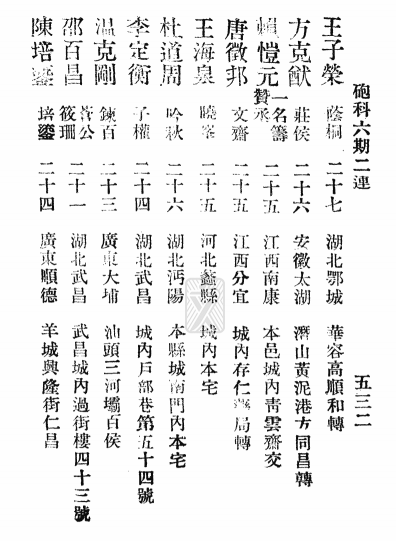
Baoding Military Academy Alumni Records ↕ Fang Keyou
Artillery Section, Sixth Term, Second Company
Name: Fang Keyou
Courtesy Name: Zhuang Hou
Age: Twenty-six
Native Place: Taihu, Anhui
Address: Huangni Gang, Qianshan, via Fang Tongchang
Supplementary Account of Various Cave Wonders
By Ma Xizhen
-
Luohan Cave Located south of the Hanging Temple in Cixia Gorge, on the top of a cliff on the west bank of the river. The cave entrance is currently blocked, leaving only a large open space outside the cave mouth, several meters wide and half as deep. It has been transformed into a Buddhist temple. In the northeast corner of the temple, there was originally an unfathomably deep hole.
Legend has it that in a certain year during the Guangxu reign, a resident monk heard a ‘咻咻’ sound of exhalation at midnight. Looking through the window, he saw a creature shaped like a calf, deep red in color, with radiant fur, rubbing itself against an apricot tree in front of the cave before returning inside. Upon closer inspection, the tree bark had peeled off, and the tree soon withered. The cave entrance was then blocked.
Another story passed down by the elders, the date unknown, tells of a diligent worker named Tang from Tangjiazhuang. Every night, he would go home, but his address was inconsistent when he was questioned. Tang became suspicious and had his son follow him one night. They went to the Luohan Cave and entered. The son followed into the darkness, groping his way forward, calling out but receiving no answer. After a long time, he saw a light in the distance. The worker suddenly fell to the ground and transformed into a dragon. A palace appeared before him, a different world, elegant and extraordinary. The son cried out in fright, and then someone guided him out. When the son returned home, his family had been searching for him for many days. Knowing the strangeness of the event, they forbade him from ever going back, and the worker never returned.
-
Hanyuan Cave Located to the left of the Yue Temple and Palace. Before the Ming dynasty, the cave entrance was blocked. The inspectorate censor Huang Yingkun opened it during a mountain sacrifice, and there is a commemorative stele outside the cave. Legend has it that the cave runs hundreds of li underground and connects to Yu's cave, and it can be used to travel underground to another cave. People once ventured inside to explore, bringing fire and provisions, but were stopped by a river after several days and turned back. What it truly is like is unknown and no one has dared to investigate recently. However, all major mountains have such celestial caves and blessed lands, such as Dongting and Linwu, countless in number. And I, having taken up the position in Qinshui, there is also an unfathomably deep ancient cave in the Shangyu Village under my jurisdiction, and inside there are stone formations that resemble painted flowers, incredibly beautiful. There is also a very large and deep cave in Huguan County, which is mentioned in the Dongshan Hall Diary.
-
Zongzhen Cave According to records, the Zongzhen Cave of Damo Mountain is about twenty li southwest of Shenfeng, beneath a peak cliff. There is a cave called "Zongzhen," also known as "Golden Dragon Cave," which is extremely deep and unfathomable. Some say that if one walks tens of li with a torch, there is a rushing river, which people do not dare to cross. Is this the "Taiyuan Spring" mentioned in the Erya, said to be located in Hengshan Mountain? Prayers for rain are always answered, but if there is any desecration, then the cave will erupt with water and wind, and thunder will roar, only ceasing after prayers of repentance. During the Song dynasty, the prefect Xue made three visits to pray twice, and was awarded the title of Lizhe Hou and Minghui Gong, titles which remain unchanged until this dynasty. The current emperor also cast a golden dragon with a jade tablet and threw it into the cave, prohibiting logging, closing the cave entrance, cutting off access. A Mr. Du repaired the temple, and Yue Anchang wrote a record. Note: This passage is from historical records, the dynasty it refers to is unknown, and its location is now between Yuquan and Longshan. I shall visit it when I have the time.
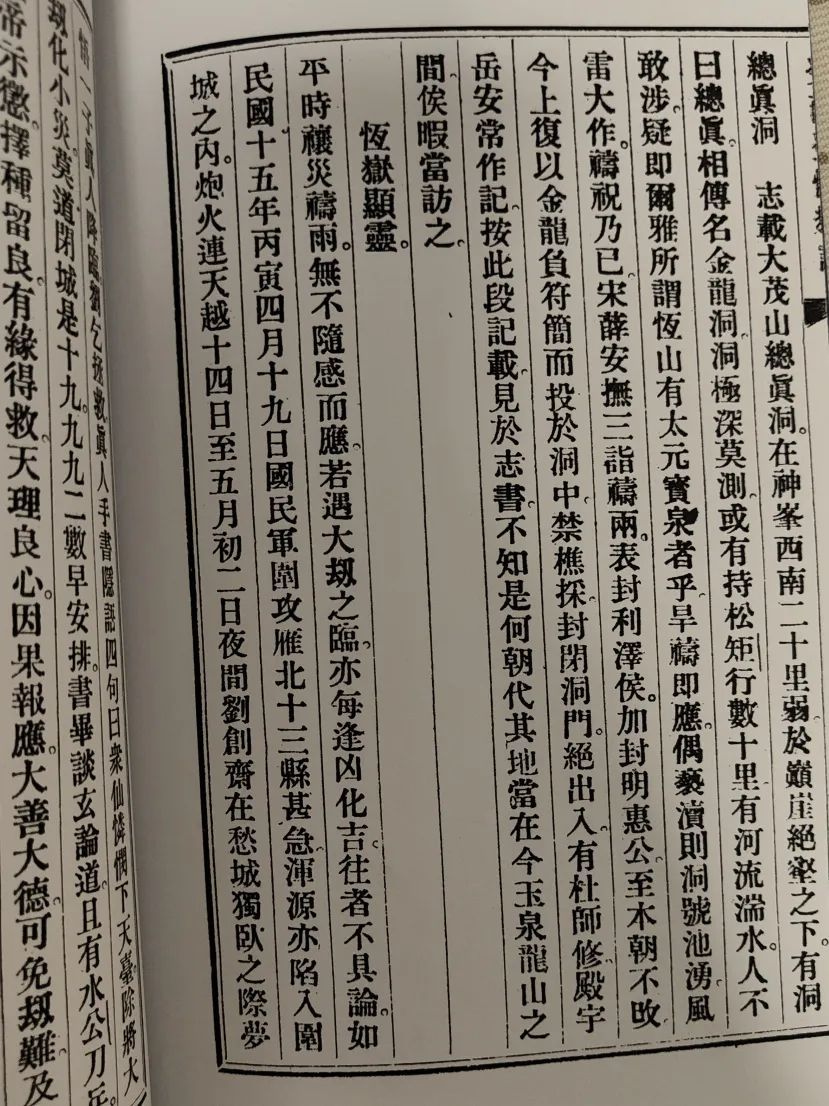
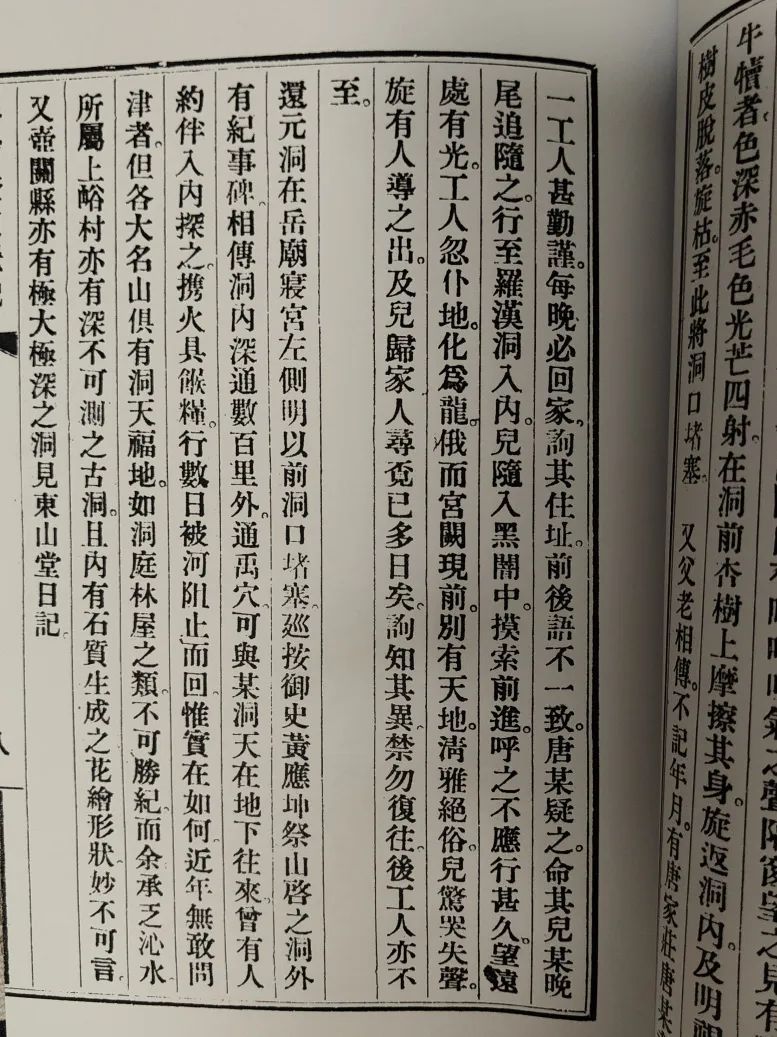
▲Supplementary Account of Various Cave Wonders The illustration is shown on the previous page.
Hengyue's Manifestations
By Ma Xizhen
Prayers for averting disasters and rain have always been answered. Even in times of great calamity, there have always been instances of turning misfortune into good fortune. Past examples need not be mentioned. For example, on the 19th day of the fourth month, Bingyin year (1926), the National Army fiercely attacked thirteen counties in northern Shanxi, and Hunyuan was also besieged. The sounds of cannons echoed in the sky. From the 14th to the night of the second day of May, while Liu Chuangzhai lay alone in the city of sorrow, he dreamed that a Real Person appeared, to whom Liu prayed for salvation. The Real Person wrote four cryptic lines: "Many immortals show mercy from the Heavenly Terrace, changing great calamity into small misfortune. Don’t think the siege is only nineteen days, the number ninety-nine and two has been arranged." Having written this, they discussed profound truths and Daoist principles. There were also sayings such as: "The water and the weapons, God's punishment, choosing and leaving good people, those with affinity will be saved, heavenly principles, conscience, cause-and-effect retribution, great goodness, great virtue can avoid calamity", and "the immortals differentiate good and evil, checking merits and demerits, and sleeping peacefully with the bullets." At that time, the lifting of the siege was still a long way off, on the eighth day of July. The meaning was unclear to everyone. This news spread throughout the county, and beforehand, no one understood its meaning. But when the siege was lifted and the city opened on July 8th, people finally understood the significance of the number ninety-nine matching the eighty-one days of the siege. The great calamity was transformed into a small one. The divine response was true. Its spiritual power was such.
For example, historical records state that the Hengyue envoy presented Yang Hongyu with two stone geese, and this event coincided with the birth of Emperor Taizu's imperial concubine and the appointment of Taiwei Tingzhang. When Khitan leaders Qulie and Ketugan plotted rebellion, the Hengshan Mountain god miraculously aided the emperor in suppressing the rebellion, quickly capturing them. Furthermore, during the Ming Chenghua and Jiajing reigns, there were uprisings of Western bandits and miners, and both times prayers were offered at the Hengshan temple, resulting in success. Other miraculous events are too numerous to mention.
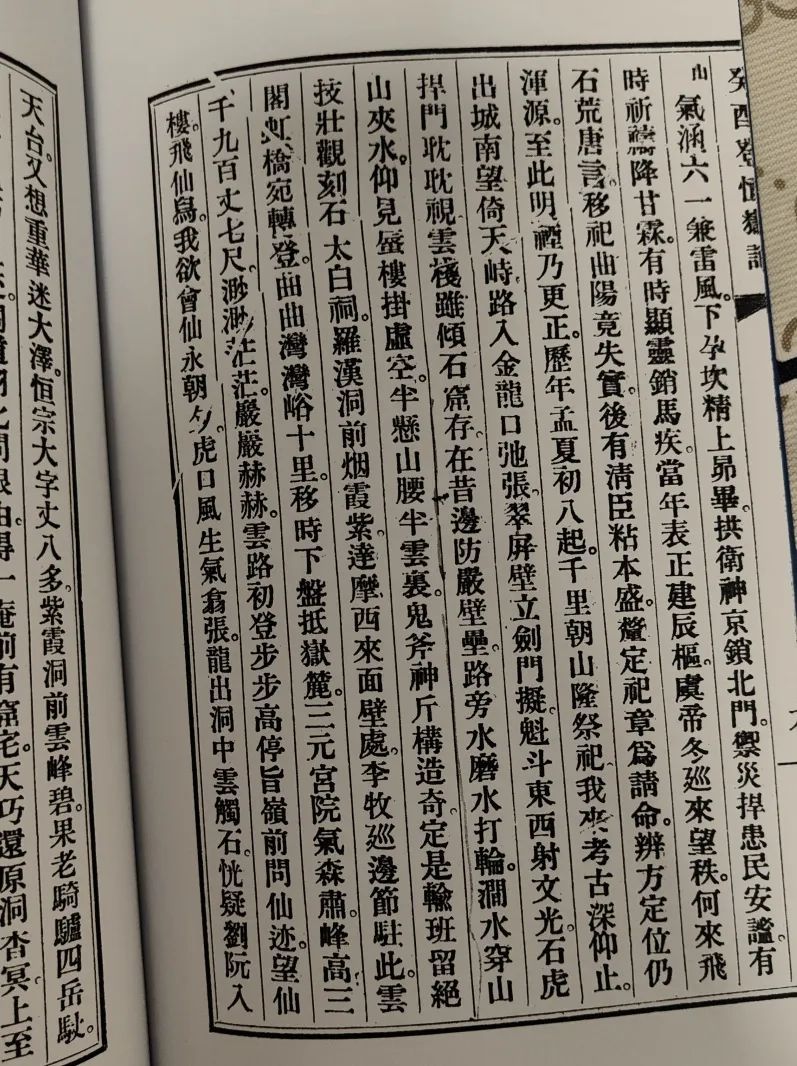
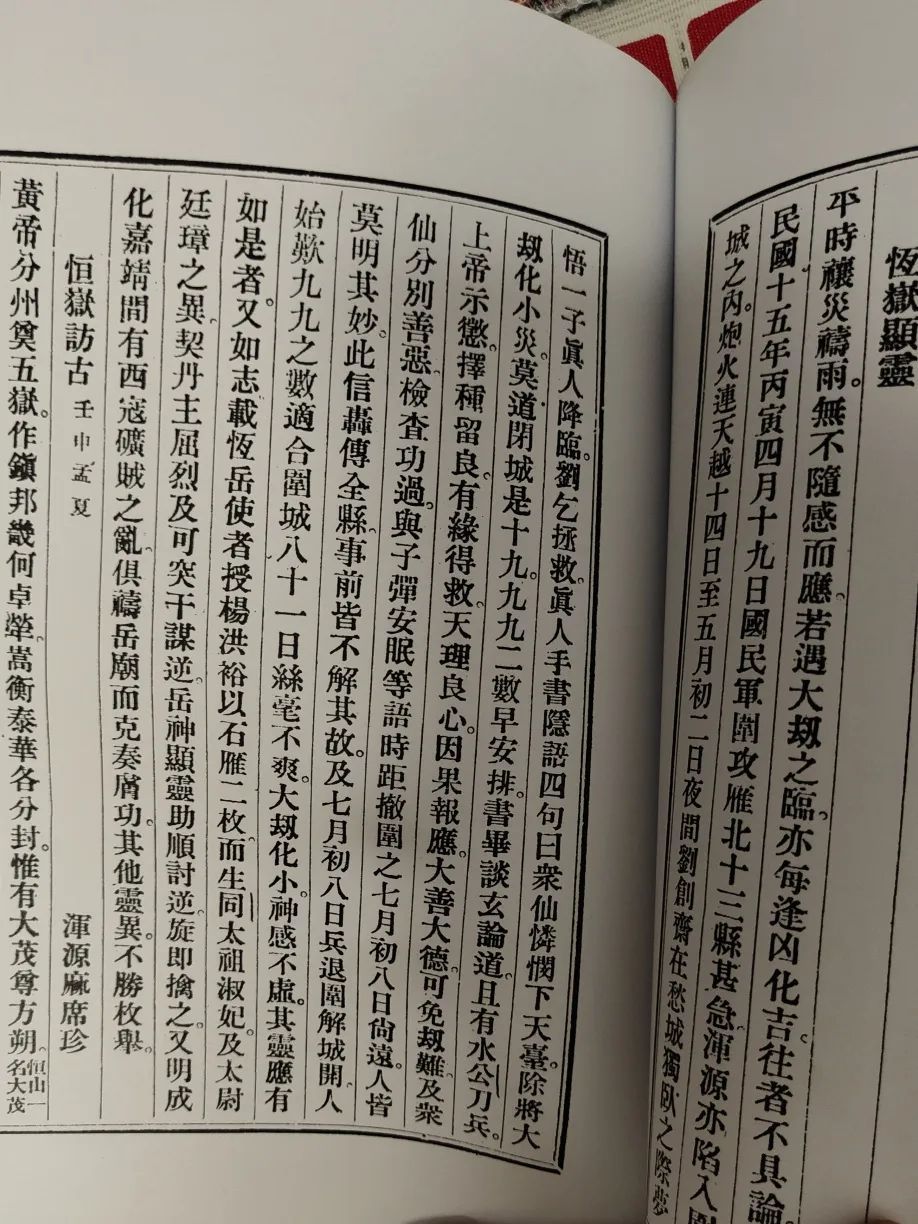
▲ "Hengyue's Manifestation of Spiritual Power" The beginning is shown in the previous image
Visiting Ancient Sites on Hengshan Mountain
By Ma Xizhen
Early Summer, Ren Shen year (1932)
The Yellow Emperor divided the states and established the Five Sacred Mountains, establishing the foundation of the nation, how magnificent!
Song, Heng, Tai, and Hua were each assigned, only the great Mao (Hengshan Mountain, also known as Mount Da Mao) is revered.
Its energy encompasses the six harmonies and combines thunder and wind, nurturing the essence of the earth below and reaching the heavens above.
It guards the imperial capital and locks the northern gate, protecting against disasters and ensuring the people's peace.
Sometimes it grants prayers for rain, sometimes it manifests its spiritual power to cure horse diseases,
In those days, it established the correct position of the Chen star, and Emperor Yu inspected it during his winter tour.
Why the absurd tale of flying stones, the relocation of the temple to Quyang resulted in the loss of treasures.
Later, the Qing official Zhan Bensheng clarified the sacrificial rites and petitioned for a resolution.
He clarified the location and orientation, returning to the original source, and thus the correct rituals were restored.
Every year, starting on the eighth day of early summer, people from thousands of miles away come to the mountain for grand sacrifices.
I come to study the ancient history and deeply admire it, leaving the city and looking south at the mountain standing tall against the sky.
The road enters the Golden Dragon Mouth, stretching out, with verdant screens standing tall like a sword gate.
The Big Dipper shines its light east and west, and the stone tiger guards the gate, its gaze intense.
Although the cloud path is collapsed, the stone cave remains, a testament to the past's strict border defenses.
Along the roadside, water mills and water wheels turn, the stream cuts through the mountain, and the mountain embraces the water.
Looking up, a mirage hangs in the void, half suspended on the mountainside, half in the clouds.
The strange formations are divinely crafted, surely the legacy of a master craftsman.
The magnificent carved stone Taibo Shrine, purple clouds and mist before the Luohan Cave.
The place where Bodhidharma came from the west to face the wall, and Li Mu stationed his troops during his border patrol.
The cloud pavilion and rainbow bridge wind their way upwards, winding through the valley for ten miles.
After some time, descending to the foot of the mountain, reaching the Sanyuan Palace, the atmosphere is solemn and awe-inspiring.
The peak is 3,907 feet high, vast and boundless, majestic and awe-inspiring,
Ascending the cloud path, step by step higher, stopping at the Lingzhi Ridge to inquire about the traces of immortals.
The Wishing Immortal Tower, the Flying Immortal Bird, I wish to meet immortals and stay here forever,
The wind from the tiger's mouth is strong and vigorous, and the dragon emerges from the cave, the clouds touching the rocks.
It seems as if Liu and Ruan entered Tiantai Mountain, and I also think of Chong Hua getting lost in the vast marsh,
The large characters of Hengzong are eight feet tall, and the green peaks and clouds are before the Zixia Cave.
Guolao rode a donkey with four soldiers carrying his luggage, leaving bloody footprints on the mountainside.
Yan Daoyu ascended to immortality, inquiring about the origin, and there is a cave dwelling in front of De Yi Temple.
The natural cave is mysterious and dark, leading to the sleeping palace, separating mortals from immortals.
The Tiger Peak is majestic and lies on the high ridge, its imposing presence steals one's spirit.
Ancient pines and cypresses transform into dragons and snakes, their claws and teeth bared, their scales reversed.
There are also hanging roots and intertwined trees, where Zhang Guo once tied his donkey.
The Ziwei Pavilion reflects the stars, and smoke and mist emerge from the Sanmao Cave.
The flying phoenix manifests the spirit of Lü Dongbin, and the style of the Great King prevails morning and evening. (Lü Zu, Da Wang temples etc.)
In this ethereal landscape, immortals often meet.
At this mountain pass, the terrain becomes slightly wider, and the Baiyun Hall is protected by clouds. (Now called Jieguan Pavilion)
Beside the hall, the spiritual spring is divided into sweet and bitter water (named Xuanwu Well), and prayers for rain are always answered without fail.
A square pond was dug, and water gushed forth, flowing continuously without stopping.
Sometimes, if one is disrespectful to the gods, they will be angered, and one must repent with incense, otherwise the cave will be windy and there will be many misfortunes.
Below Xiyangling, gazing at the sunset, the five colors of the setting sun are dazzling.
Looking up, round clouds emerge from the cave, the Azure Dragon and White Tiger rise and fall.
The dragon god makes rain and pushes the thunder chariot, and the Dingjia and Taiyi walk among the colorful clouds. (Azure Dragon, White Tiger, Dragon King, Taiyi temples etc.)
At this point, all the mountains submit, looking down at the world, people are like ants.
Climbing the steps, changing clothes, forgetting fatigue, devoutly worshipping at the Zhenyuan Hall.
The magnificent palace and temple are built in a pure and ethereal place, and all the mountain ranges face north.
The two energies harmonize, and the world is clear, without clouds and smoke obscuring the land.
At this moment, breathing connects to the imperial residence, the energy is like a long rainbow, and the eyes are like lightning.
Unfettered and detached from the world, the mind is clear, and the worldly worries are insignificant.
The Sutra Library houses Taoist scriptures, sheltered from wind and rain by a large pine tree.
The Jiutian Palace connects to the Lingyun Pavilion, winding and twisting, looking like a wooden dragon.
To the east of the stream, the Ziyu Valley is full of Ganoderma lucidum, and to the west of the rock, the ruins are covered with snow.
The stone lipid paintings are brilliant, and the precious flowers and herbs are lush and green.
In ancient times, Emperor Shun sincerely worshipped Heaven, and offerings flew to the summit of Feilai Peak.
I observe the stone caves, difficult to ascertain, how can they fly and return?
Perhaps it's the talk of Qi Dong's countrymen, soaring straight to the highest point.
Mountains beyond mountains, pavilions beyond pavilions, looking up to the sky beyond, how boundless.
Twelve prefectures are encompassed within sight, and the roar of the pine waves is incessant.
After reading the imperial stele, my eyes open wide, visiting Taoist priests within the Immortal's Mansion.
Overlooking the constellations Dou and Niu from the Immortal Gathering Cave, leisurely strolling by the Qinqi Terrace.
The scene of Prince observing chess and Zhongzi listening to music is no longer there, where can I find such tranquility?
The Golden Rooster's high-pitched song flows endlessly, the Jade Sheep shakes its head in confusion. (There are stones that sound like a rooster, and others shaped like sheep)
Furthermore, there is a valley leading to profound mystery, where medicine furnaces and tortoise-shaped objects remain.
It connects to Yu's underground passage in the north, and the source of the Taizhen Baoquan spring in the south.
Alas! At this moment, my spirit matches that of immortals,
Occasionally, a sudden reflection, and I see Hengchuan's eight landscapes.
In the distance, the clear clouds are light like silk, the moon is reflected in the Shenxi Pond, and the well is bubbling.
Snow covers the Jilong Mountain, and the wind howls through the pine forest.
A stream of cold water surrounds the Yuquan, and the mountain is reflected in the Jinyu Pond.
Where is the sunset glow, seeking the serene autumn colors of Bailin?
Suddenly, the sky darkens, looking down, the city is quiet and still.
The universe is vast and I am in a dream, up and down, how unfortunate.
After a while, the sun rises in the sky, and all gloominess vanishes.
In the evening, sweet rain sprinkles the dust, washing the world and making it fresh.


▲ "Visiting Ancient Sites in Hengyue" The title page is shown above.
Proofreader: Xuefang
Editor: Xuelin
Author's Introduction
Ma Xizhen (1872—1943), courtesy name Ping'an, styled Guohua, was from Shuimotuan Village, Hunyuan Prefecture, Shanxi Province. He was a Juren (provincial graduate) in the Renyin year of the Guangxu reign (six Juren from Hunyuan that year were, in order: Wang Jincheng, Cheng Tingyu, Ma Xizhen, Wang Zhangshan, Yao Dehou, Zhang Fengming). He served as a selected magistrate, judge, teacher, member of various committees of the Henan Provincial Consultative Council, supervisor of the Luobian Middle School, supervisor of the Second Normal School, judge of the Chang'an Judicial Office in Shaanxi Province, chief of the civil court of the Taiyuan Local Judicial Office in Shanxi Province, acting magistrate of Wenxi County, teacher and principal of the Hunyuan Middle School, member of the Shanxi Political Observation Office, acting magistrate and magistrate of Jincheng County, magistrate of Qinshui County, and other positions. He resigned in 1925 and returned home. In 1927, Hunyuan County Magistrate Li Zanxiang, by order of the provincial government, presented him with a plaque inscribed with “Meritorious Service to the Homeland,” which was hung above the gate of his courtyard.
Ma Xizhen was a renowned gentleman of Hunyuan during the Republic of China period. After retiring, he devoted himself to writing. His works include Illustrations of Ancient Relics Unearthed in Hunyuan, which documented bronzeware from Liyu, his selected works Snow Goose Collection, and the compilation of the Ma Clan Genealogy. Around the Marco Polo Bridge Incident, Ma Xizhen became devoted to Buddhism, residing in the Buddhist Academy in Beiping for a long time, returning to his home in Hunyuan County only two years before his death. His house, located in Sunjia Alley behind the Confucian Temple, was known as "Ma's Grand Courtyard." It has been renovated and is now a provincial-level cultural relic protection unit, welcoming visitors from all over.
Keywords:
Hengshan
Related News


